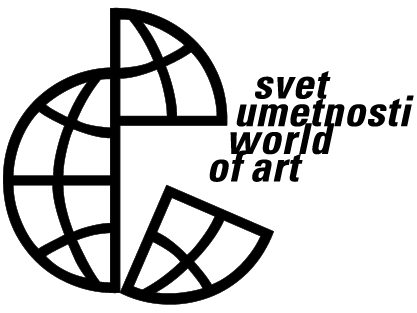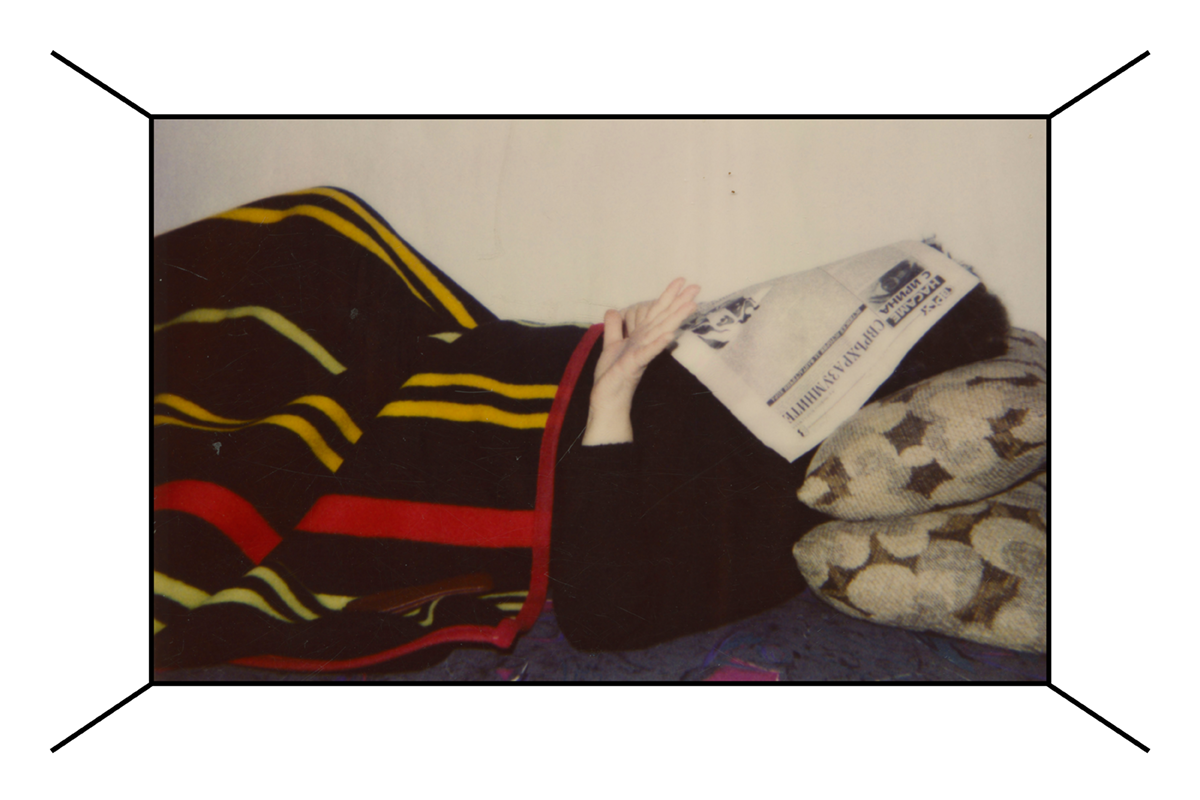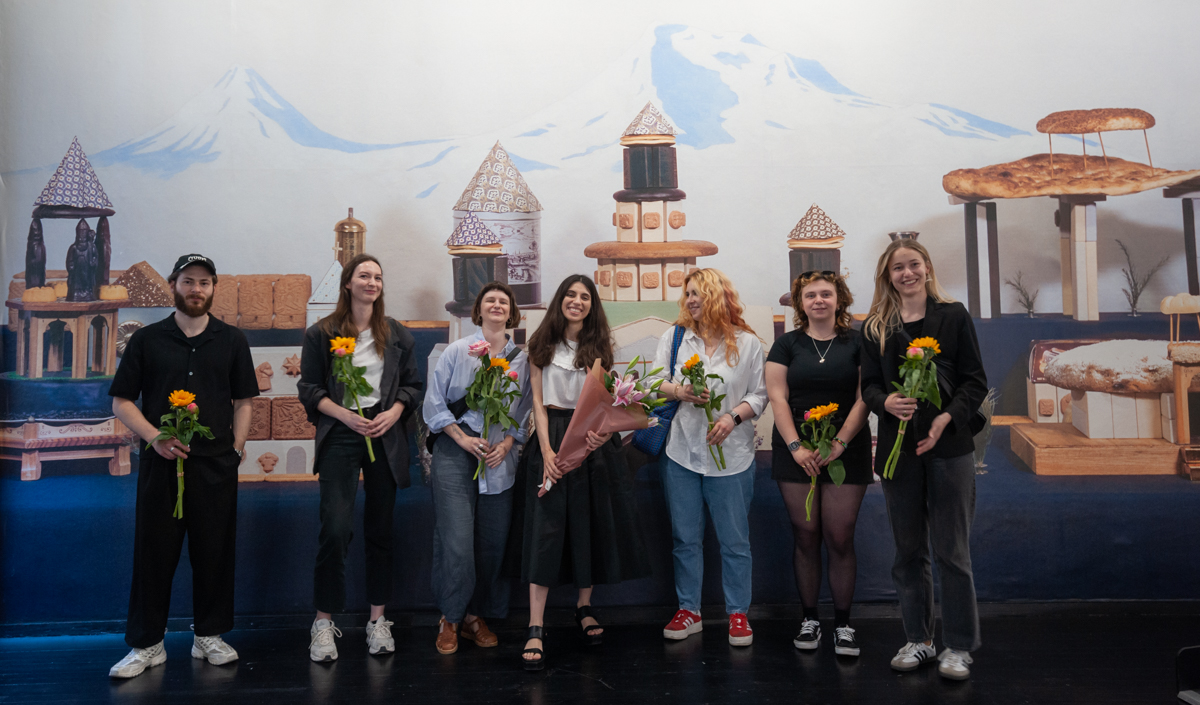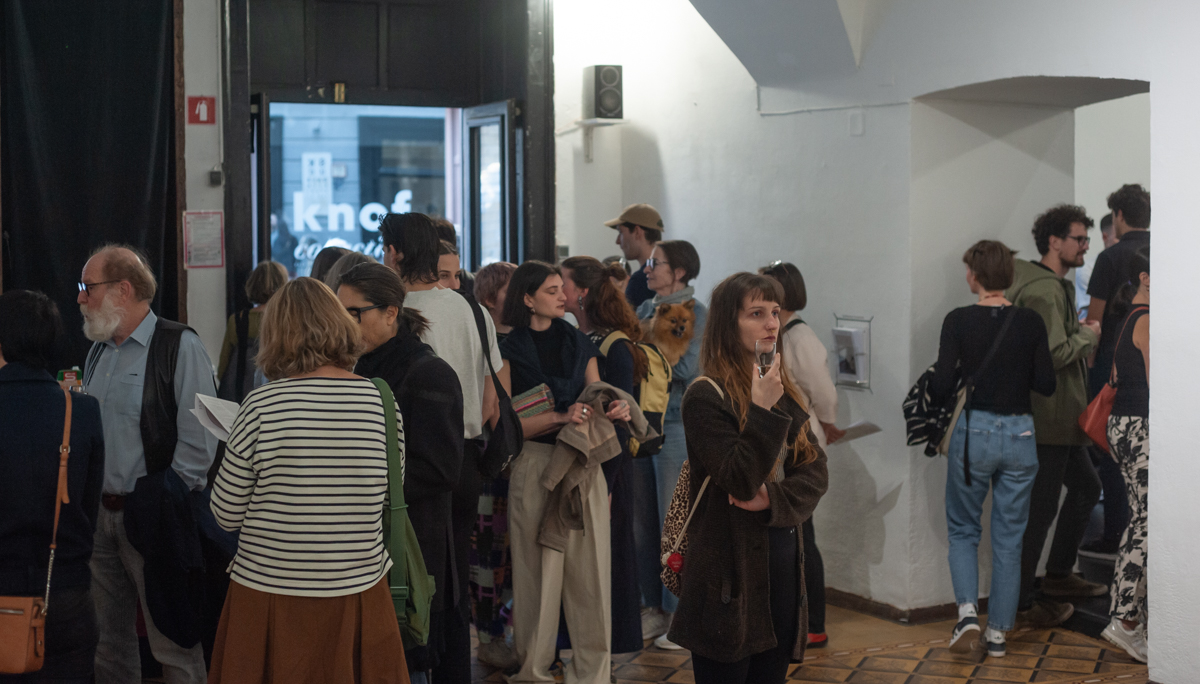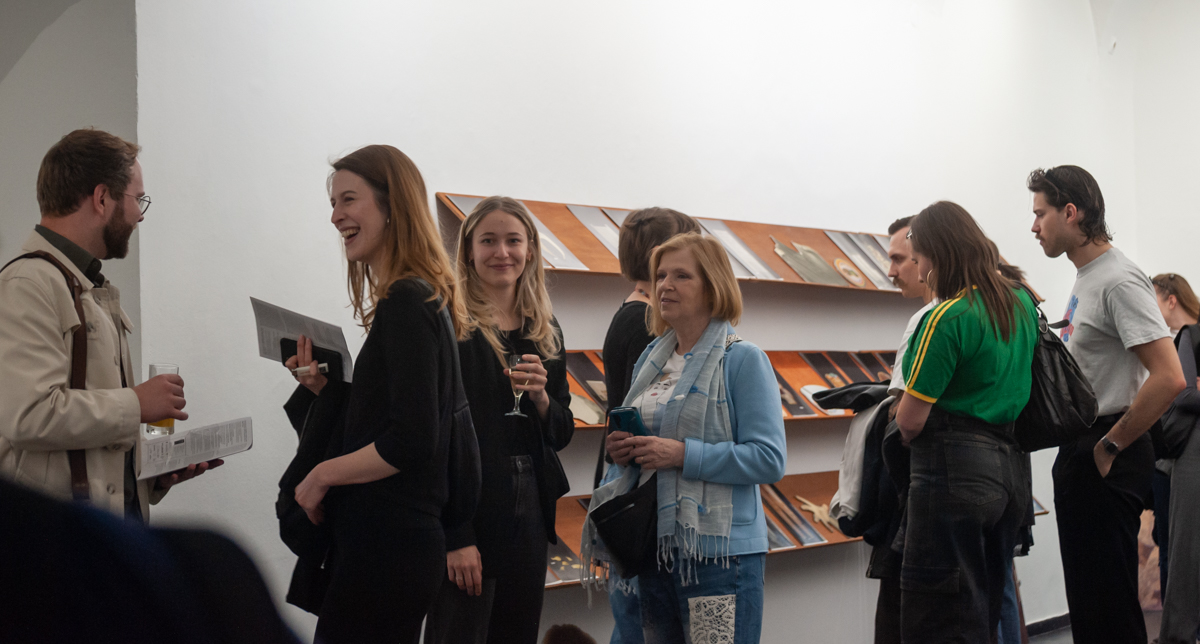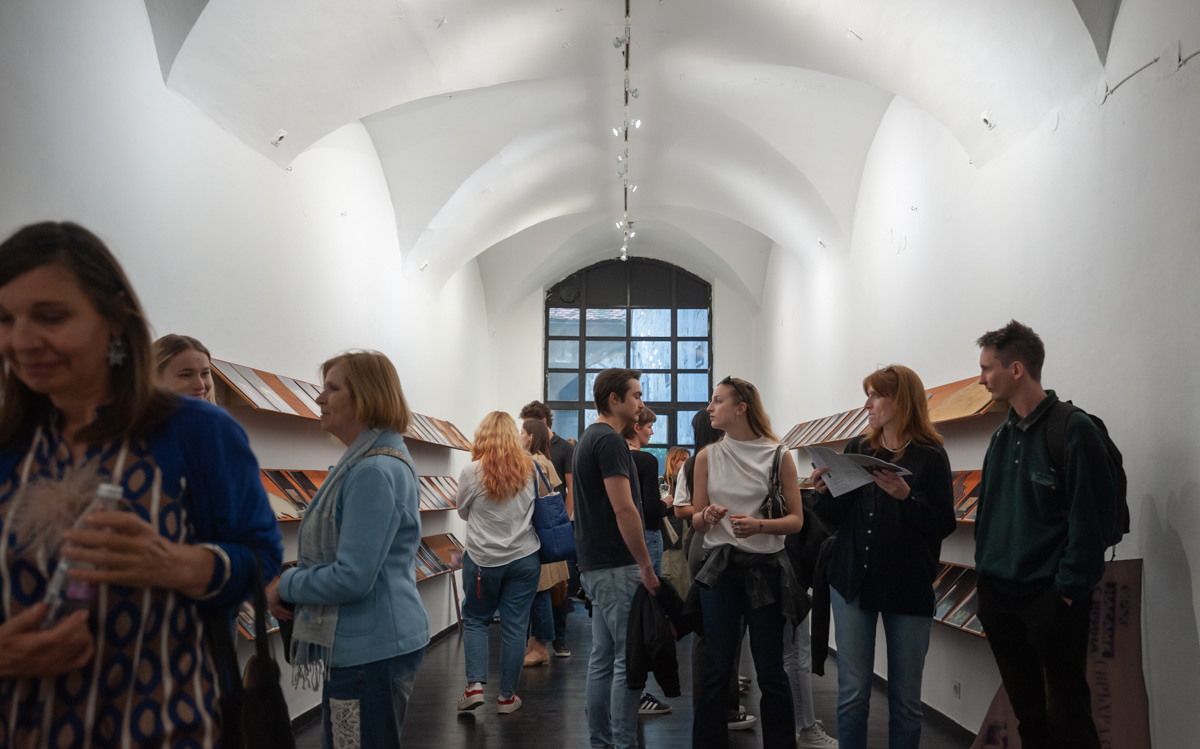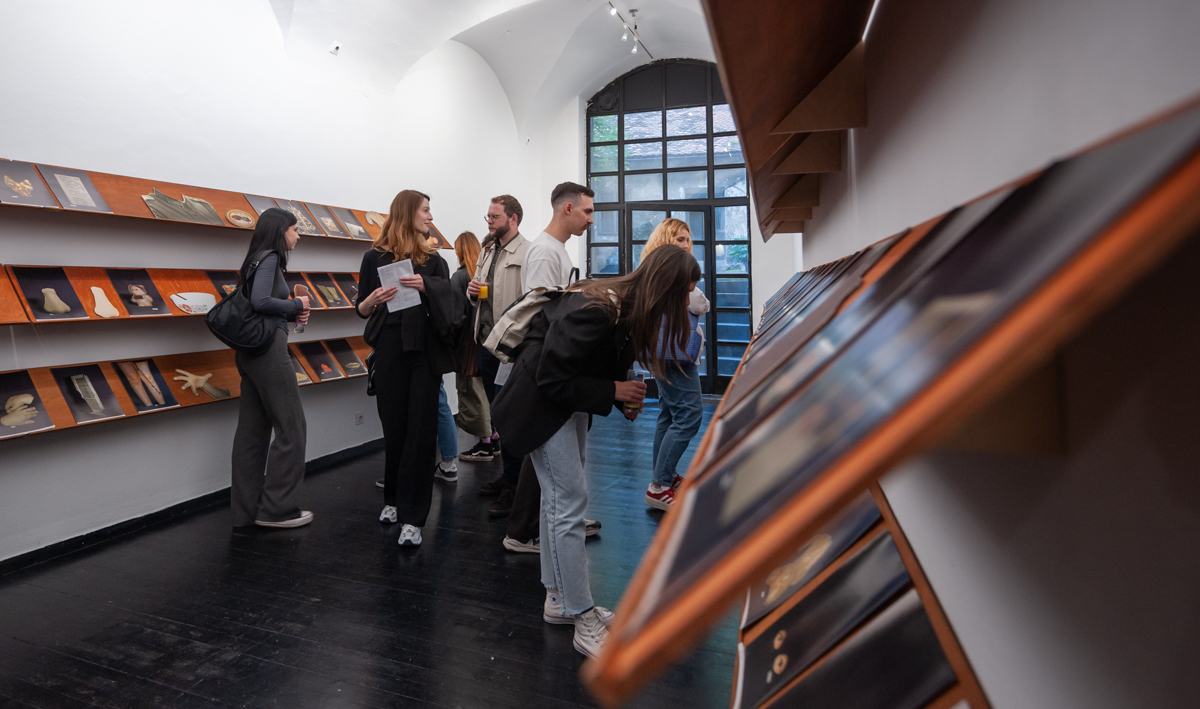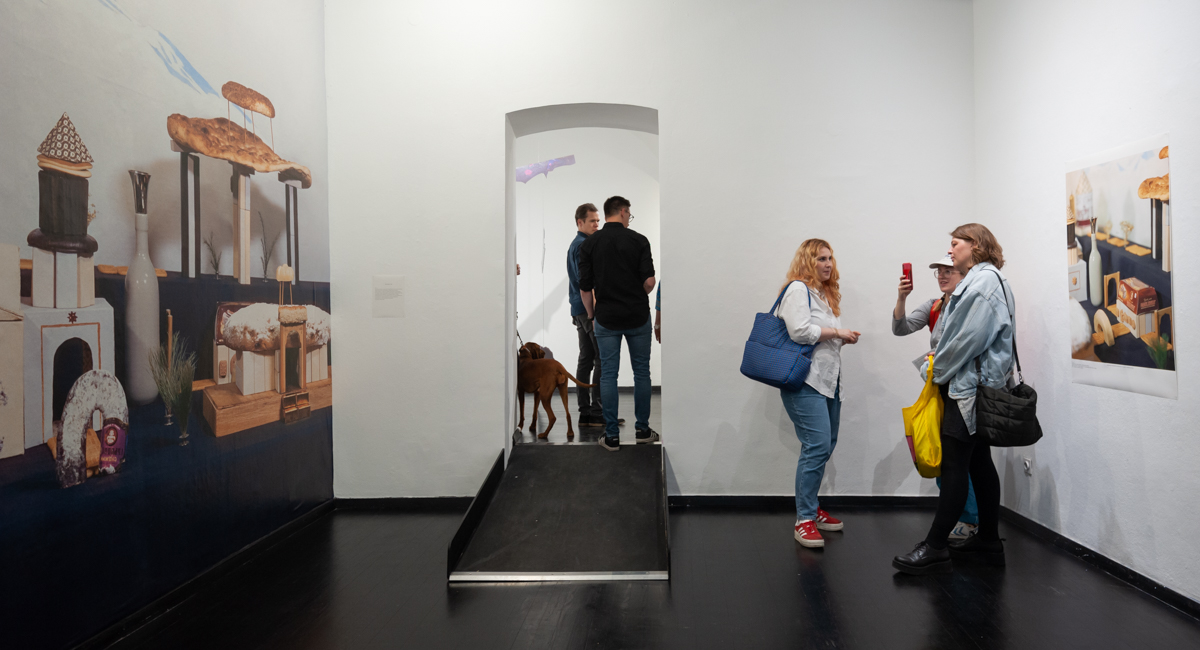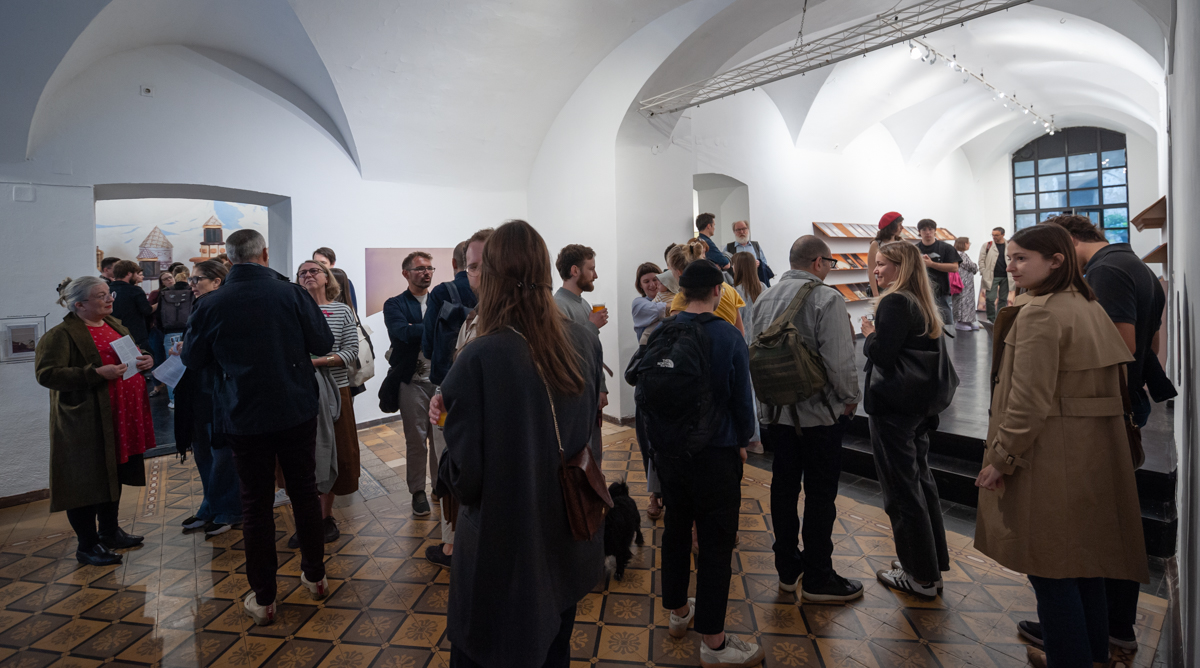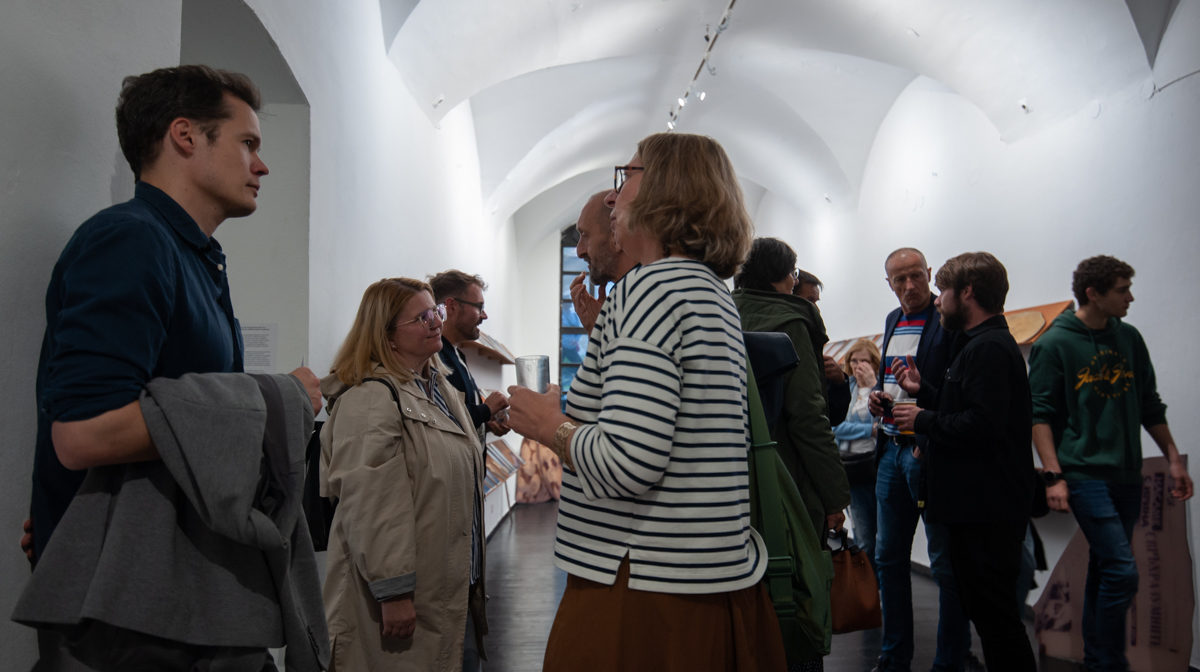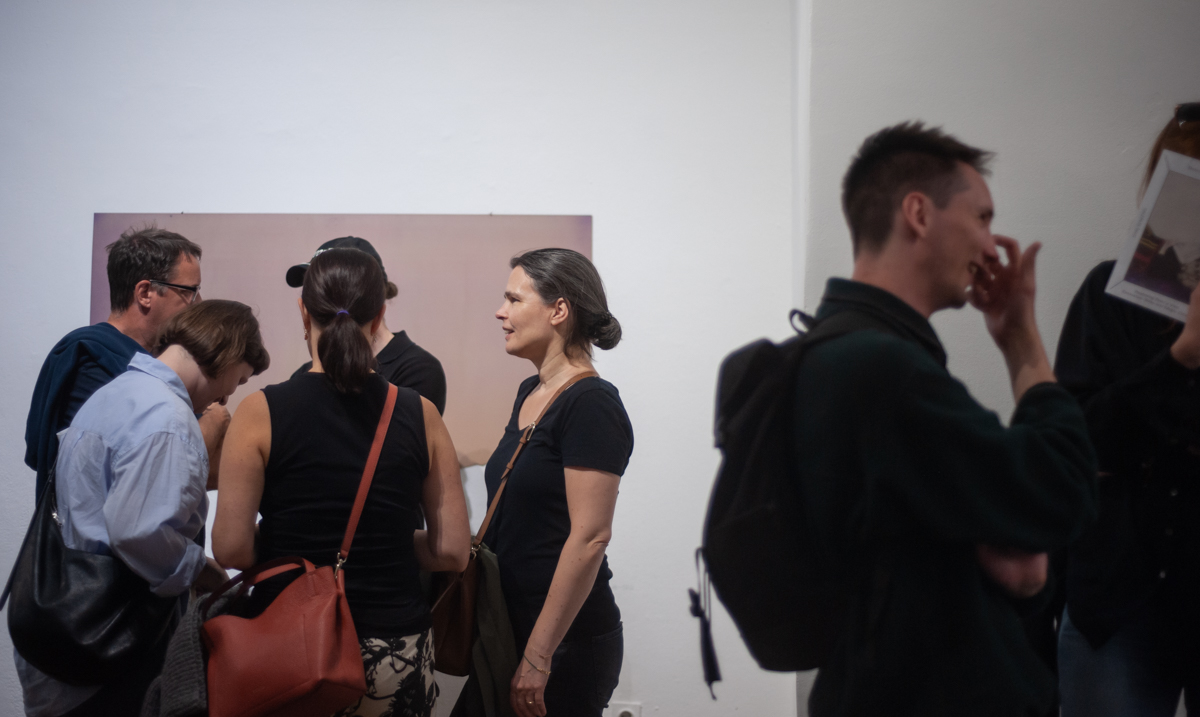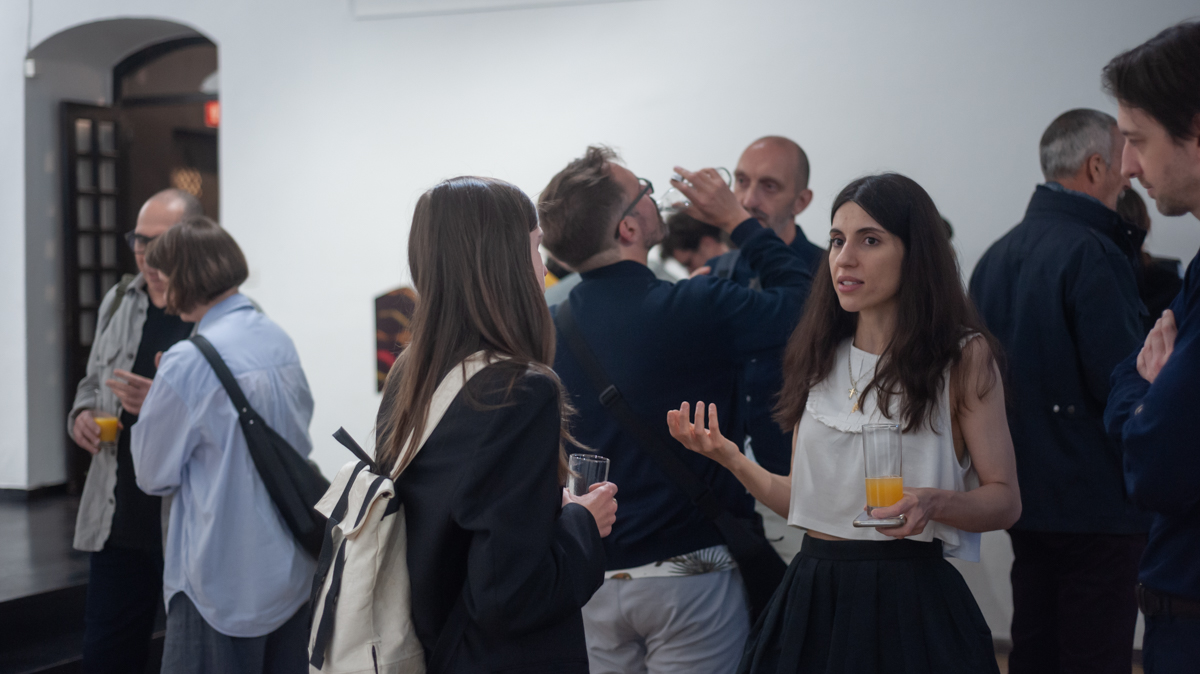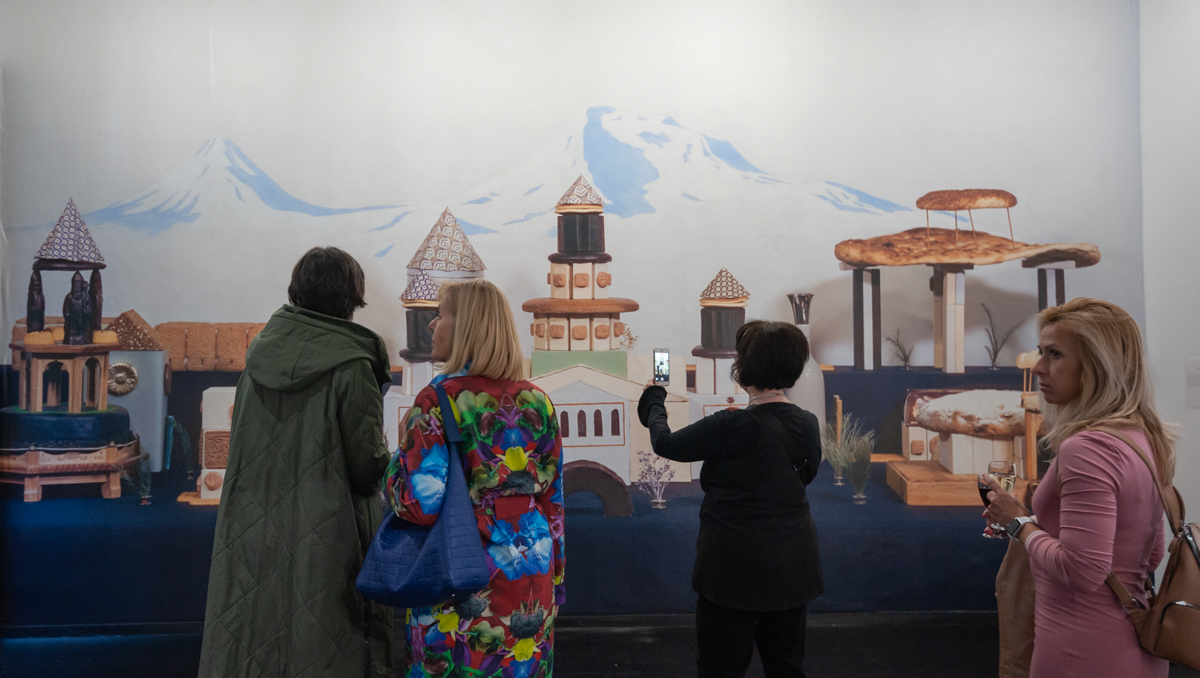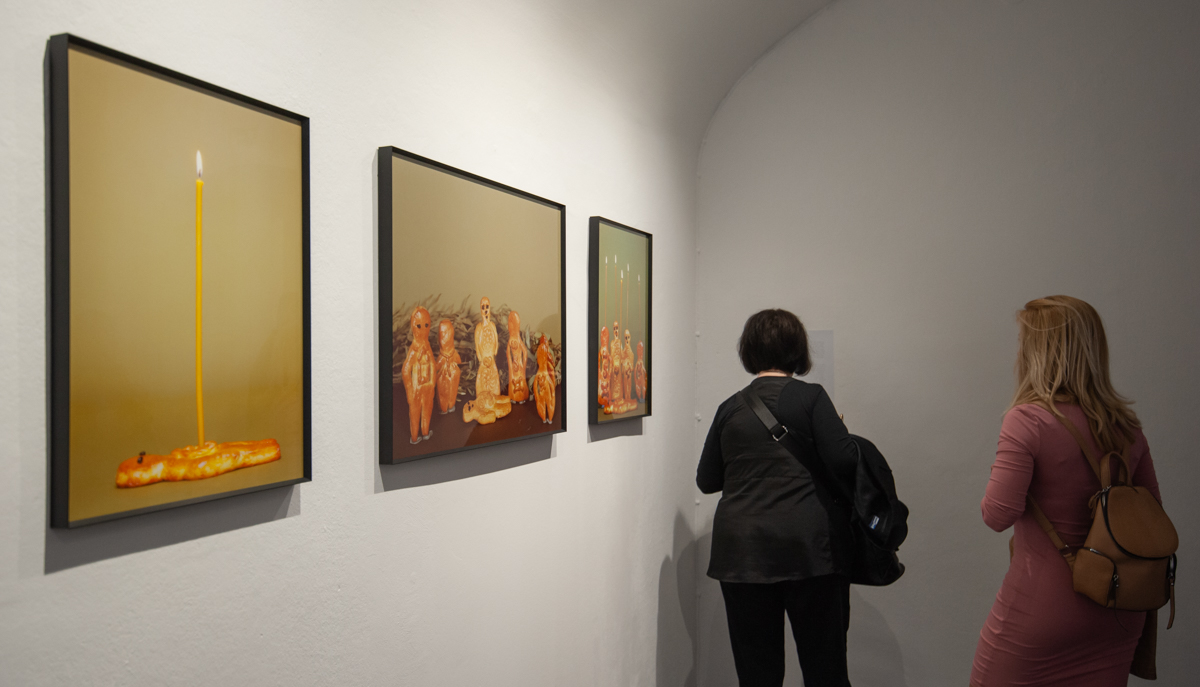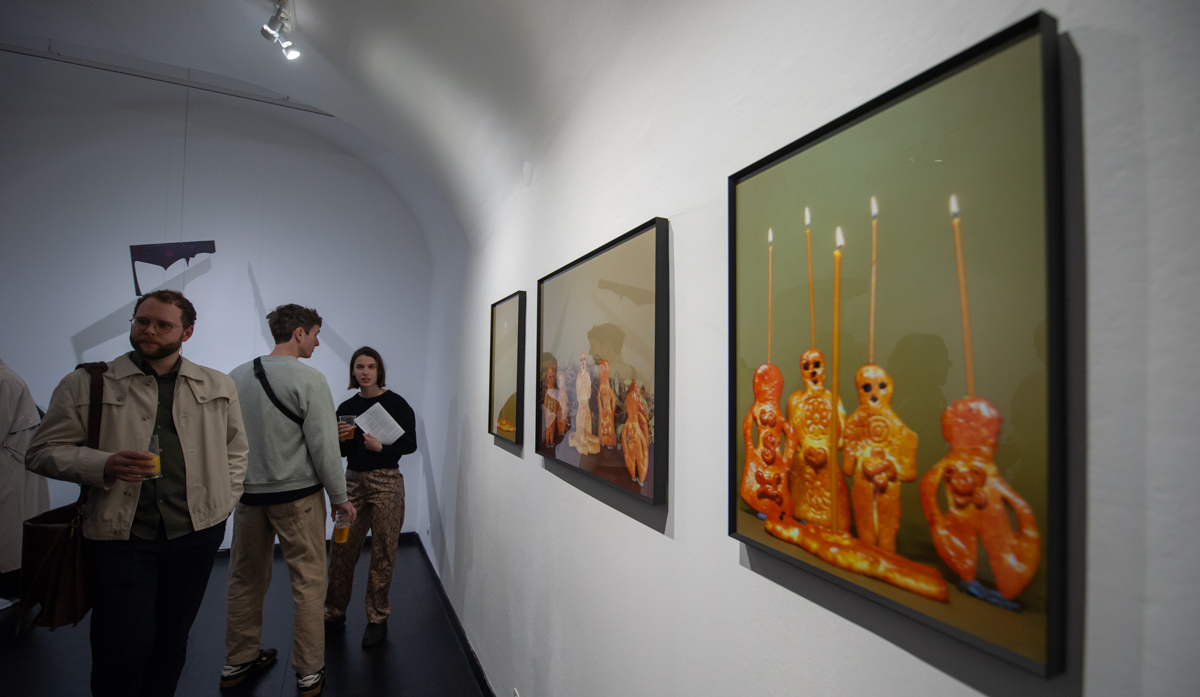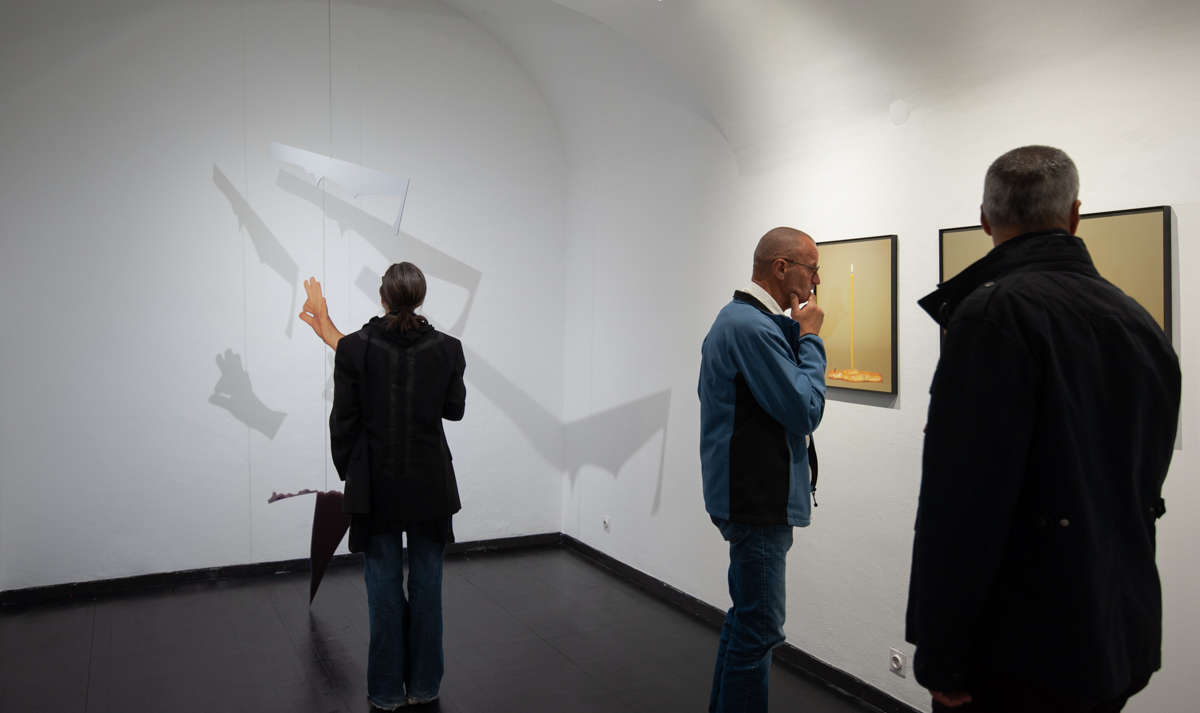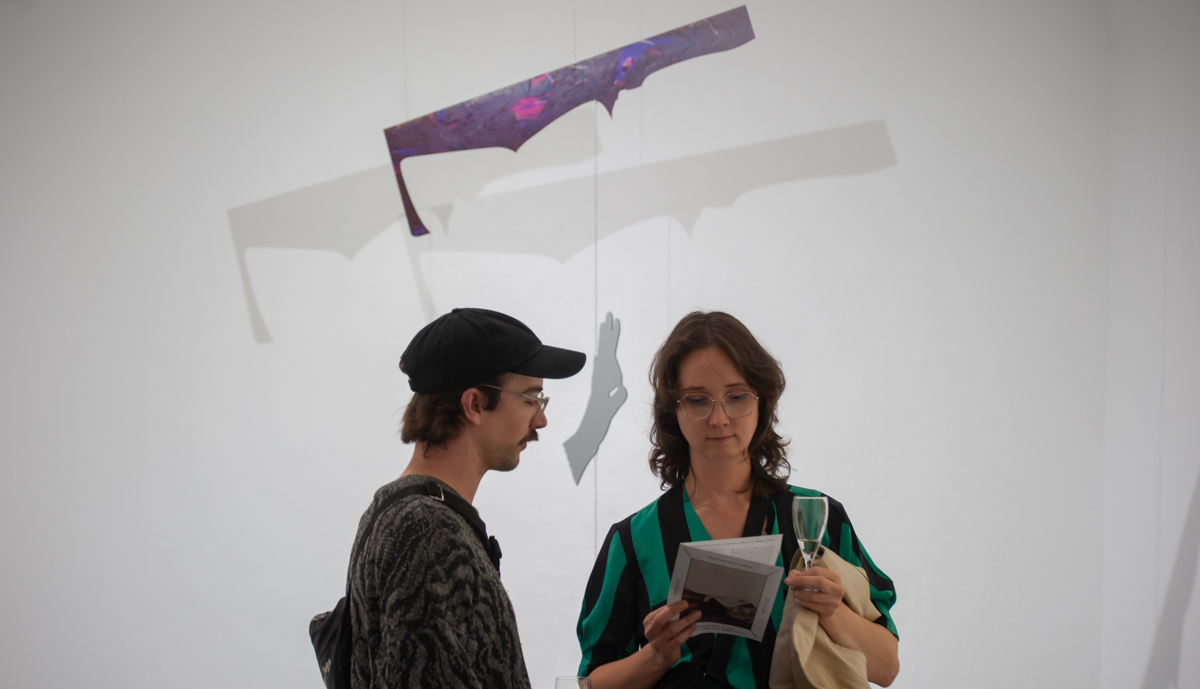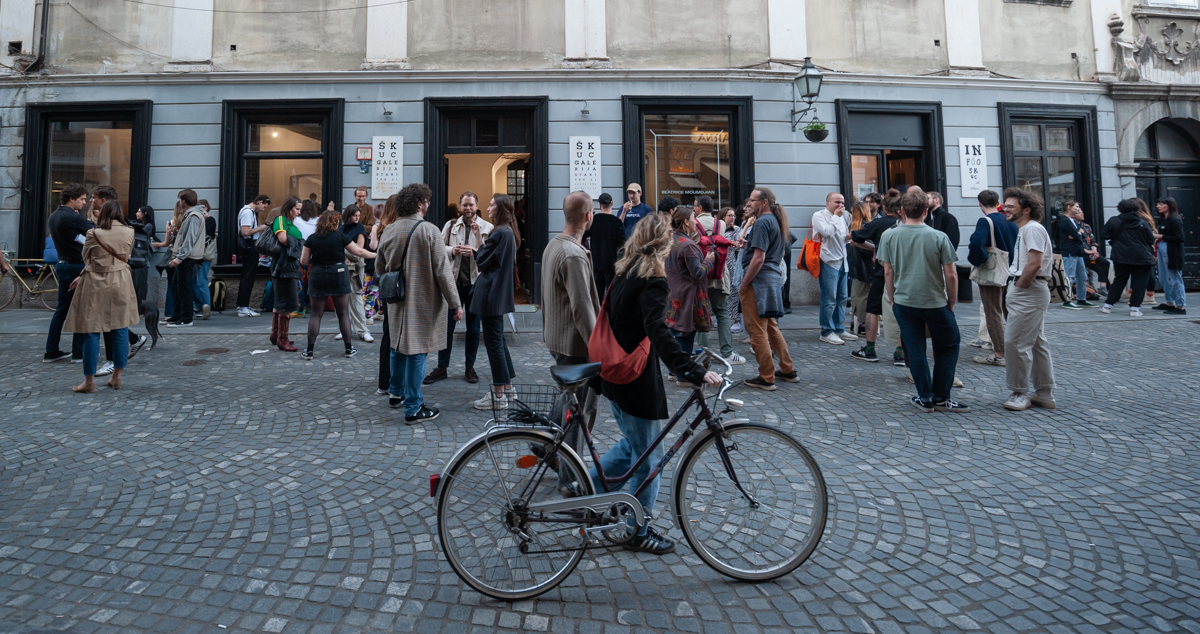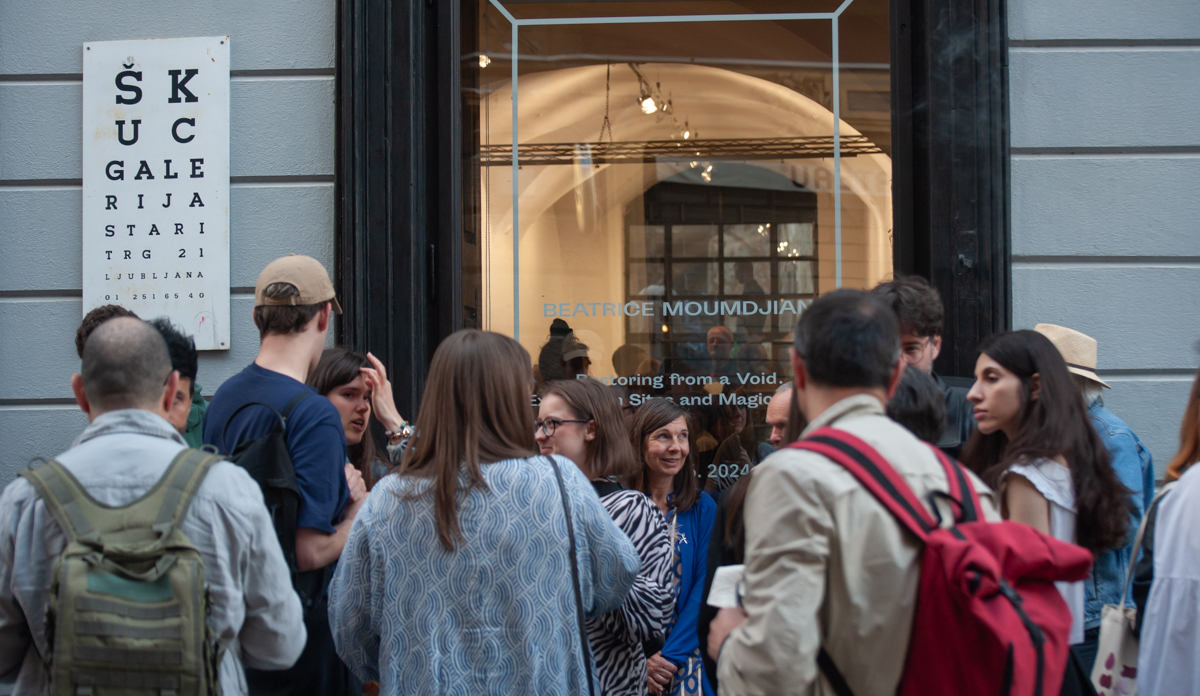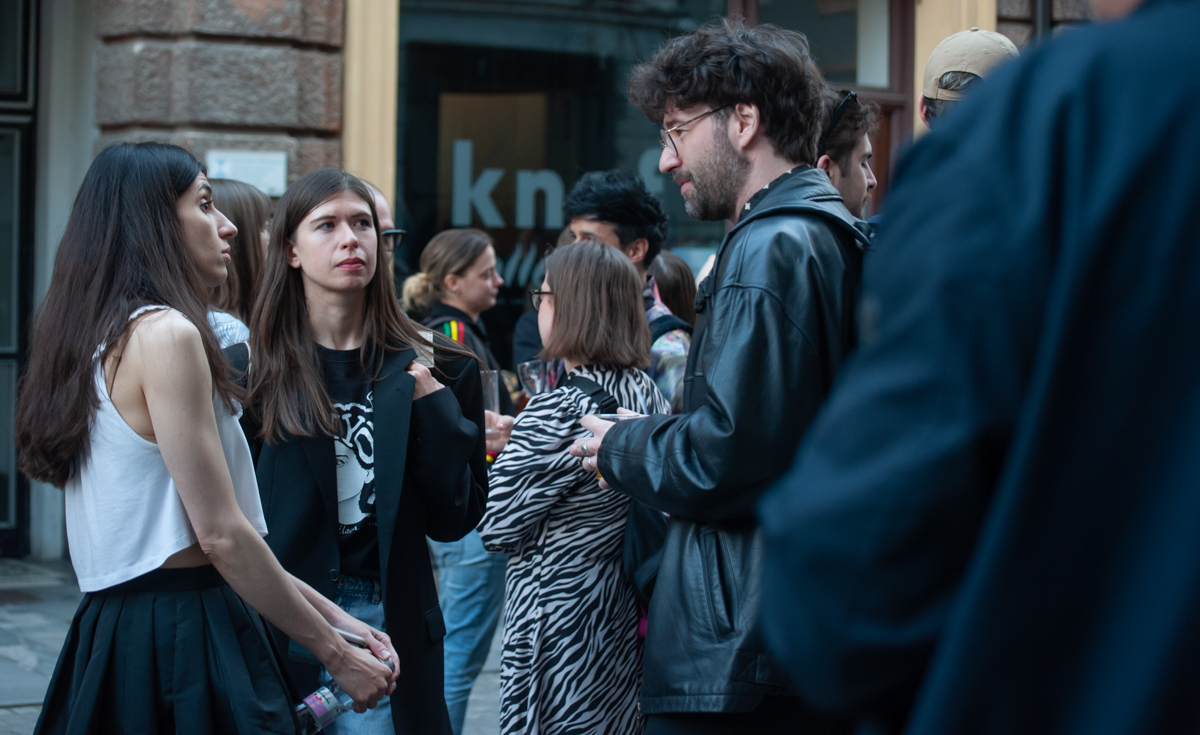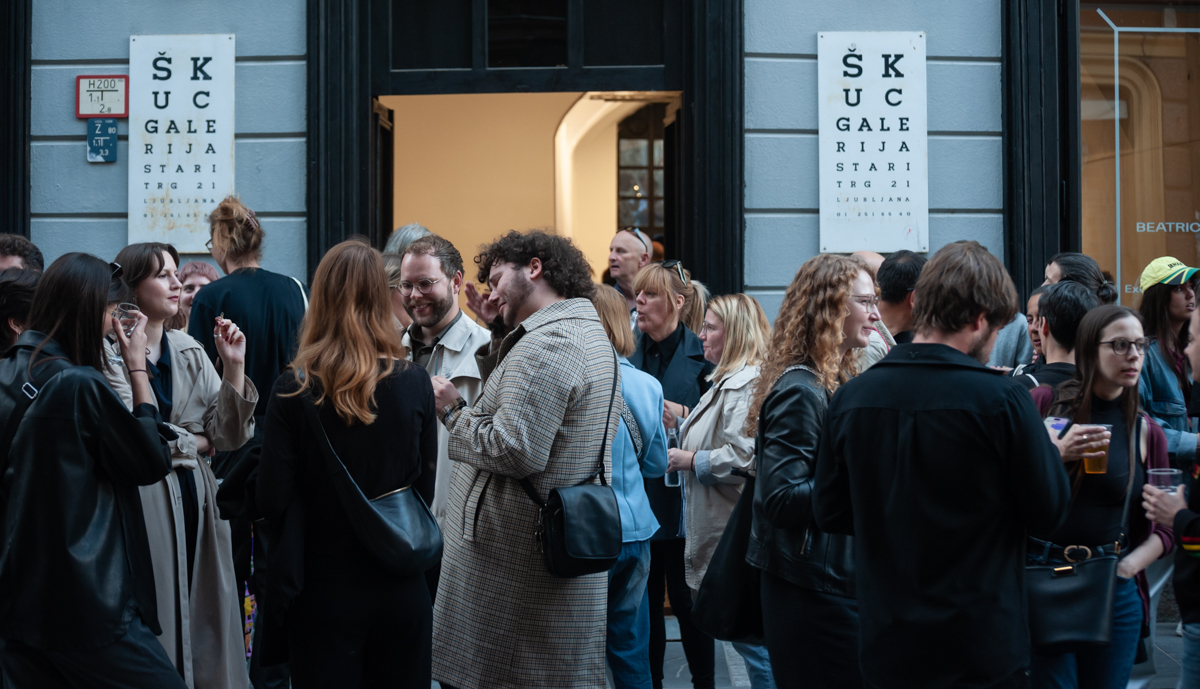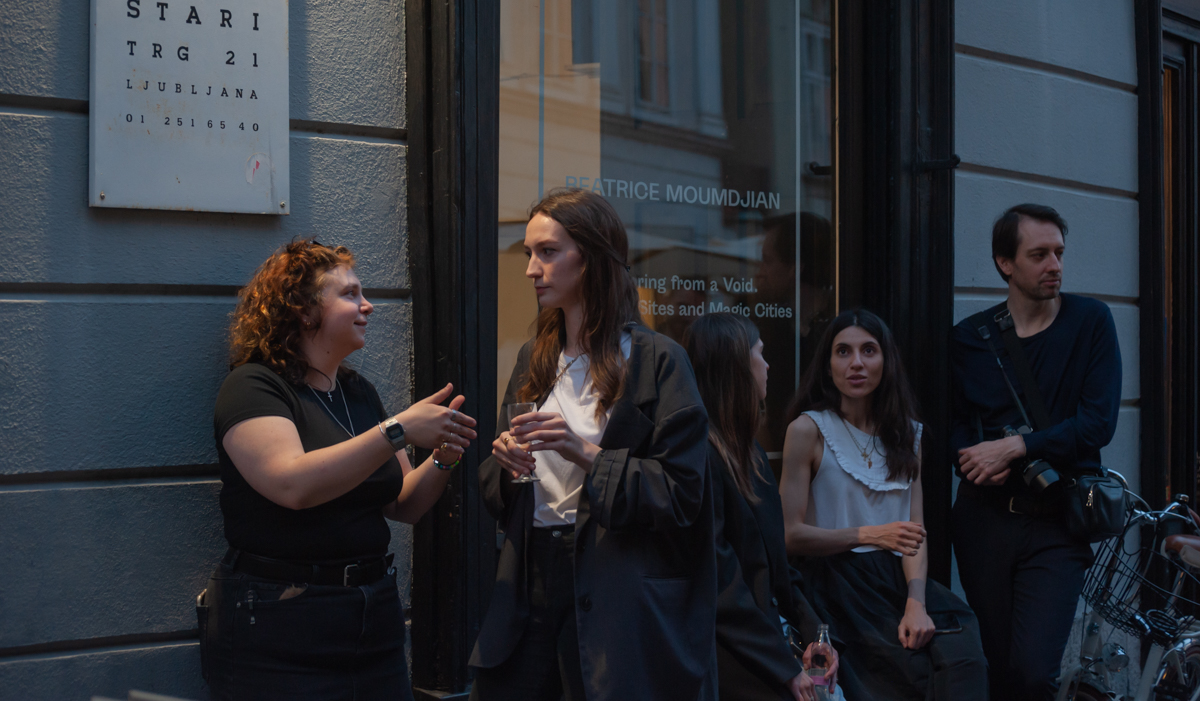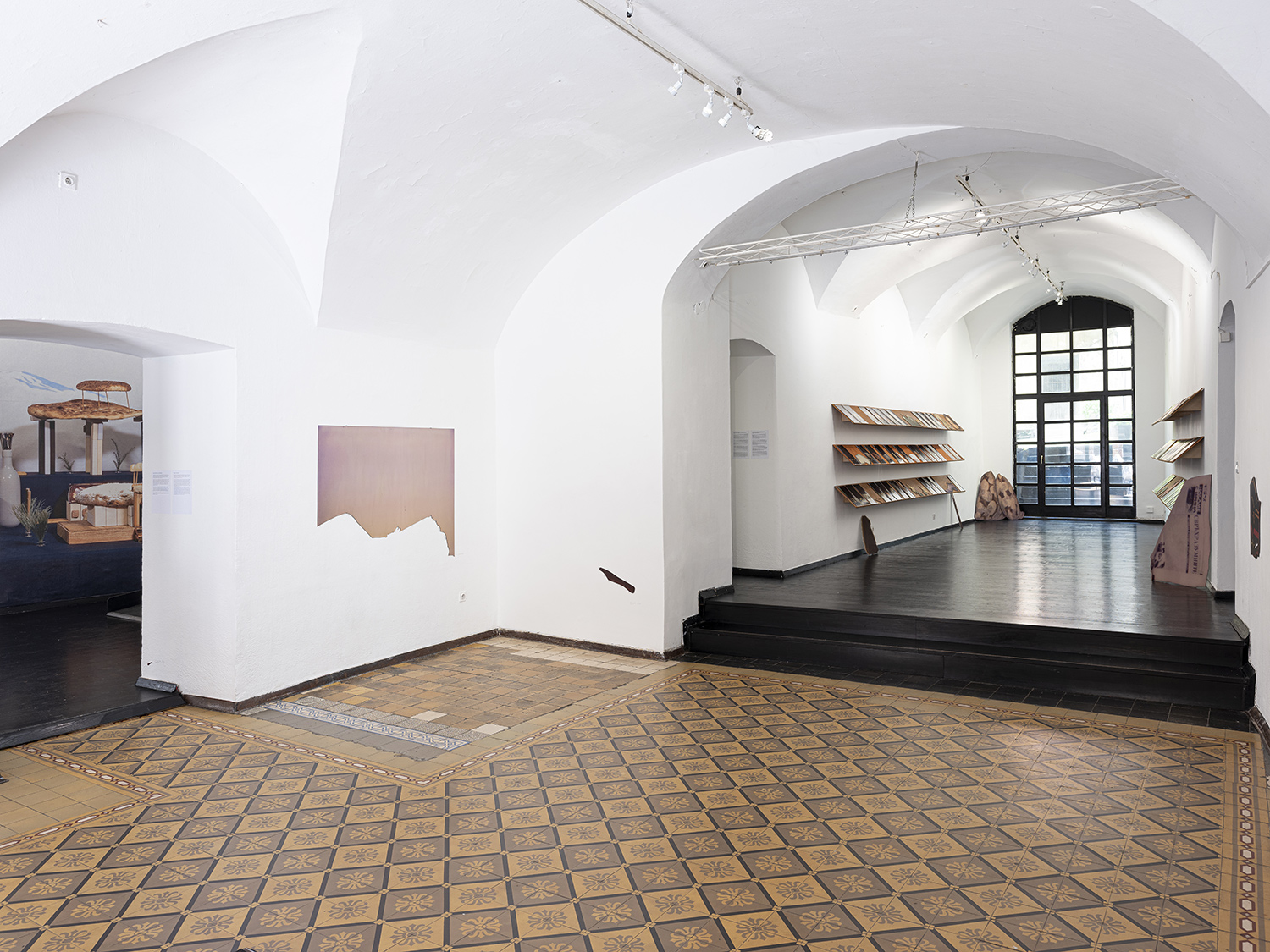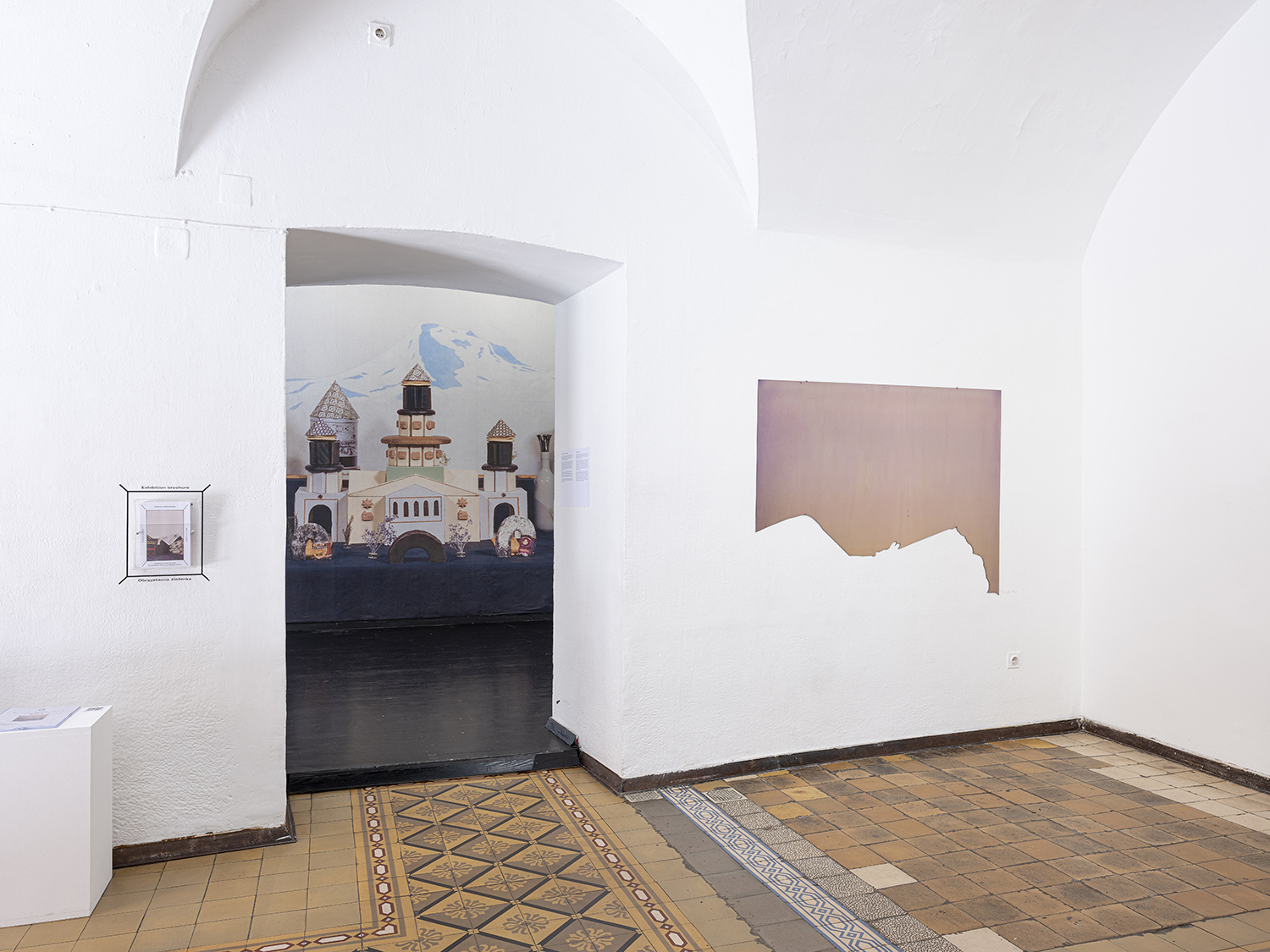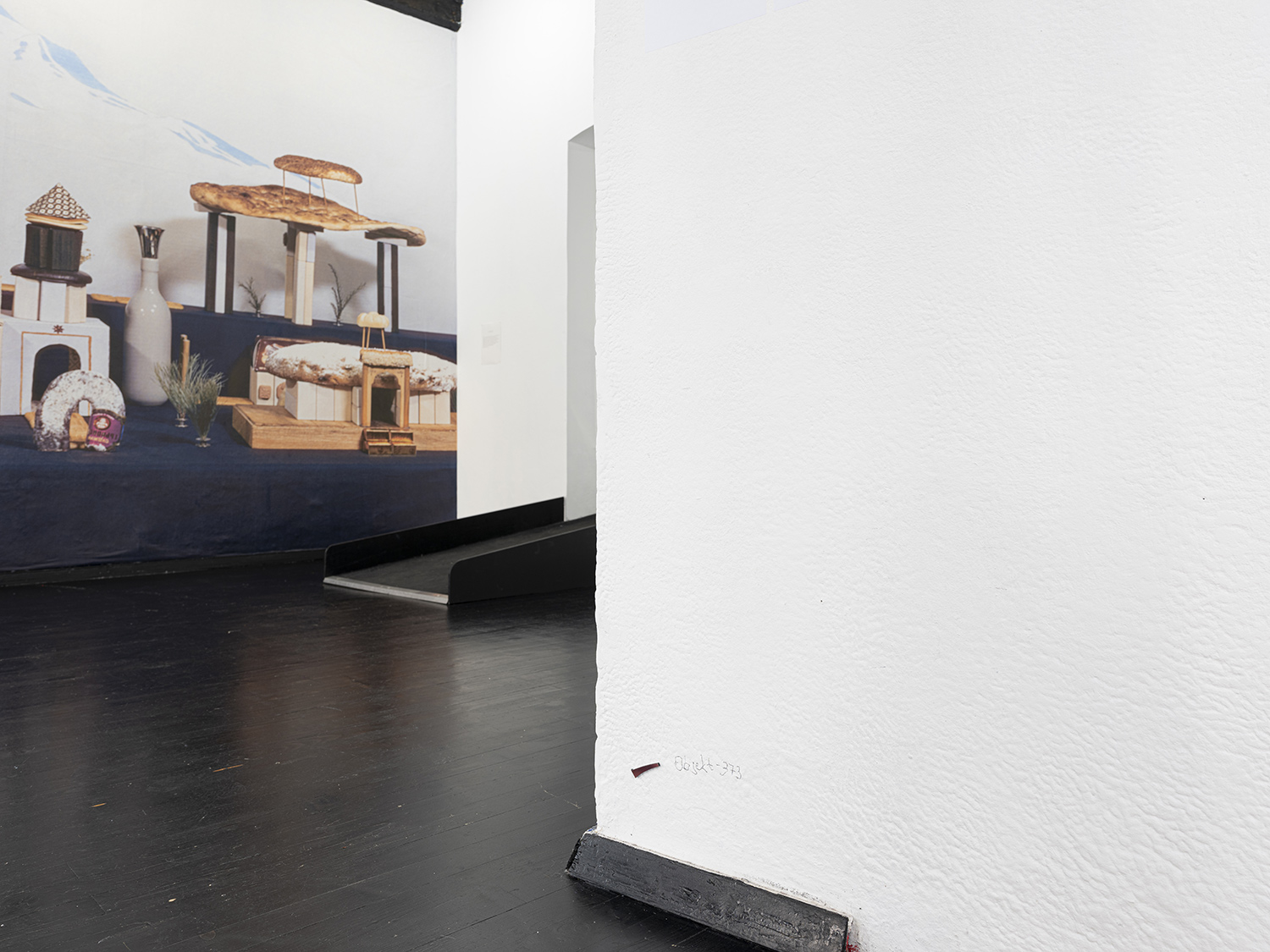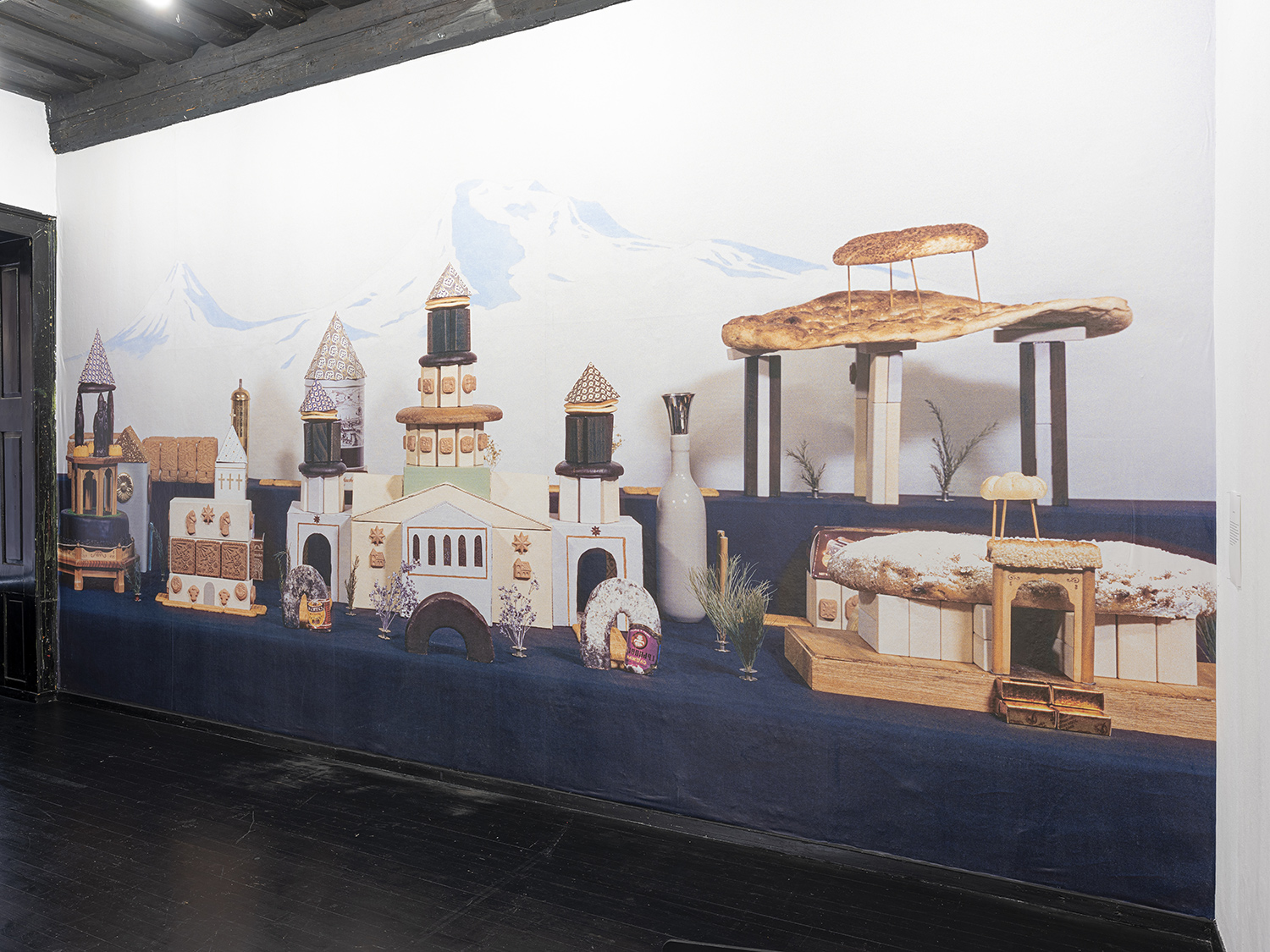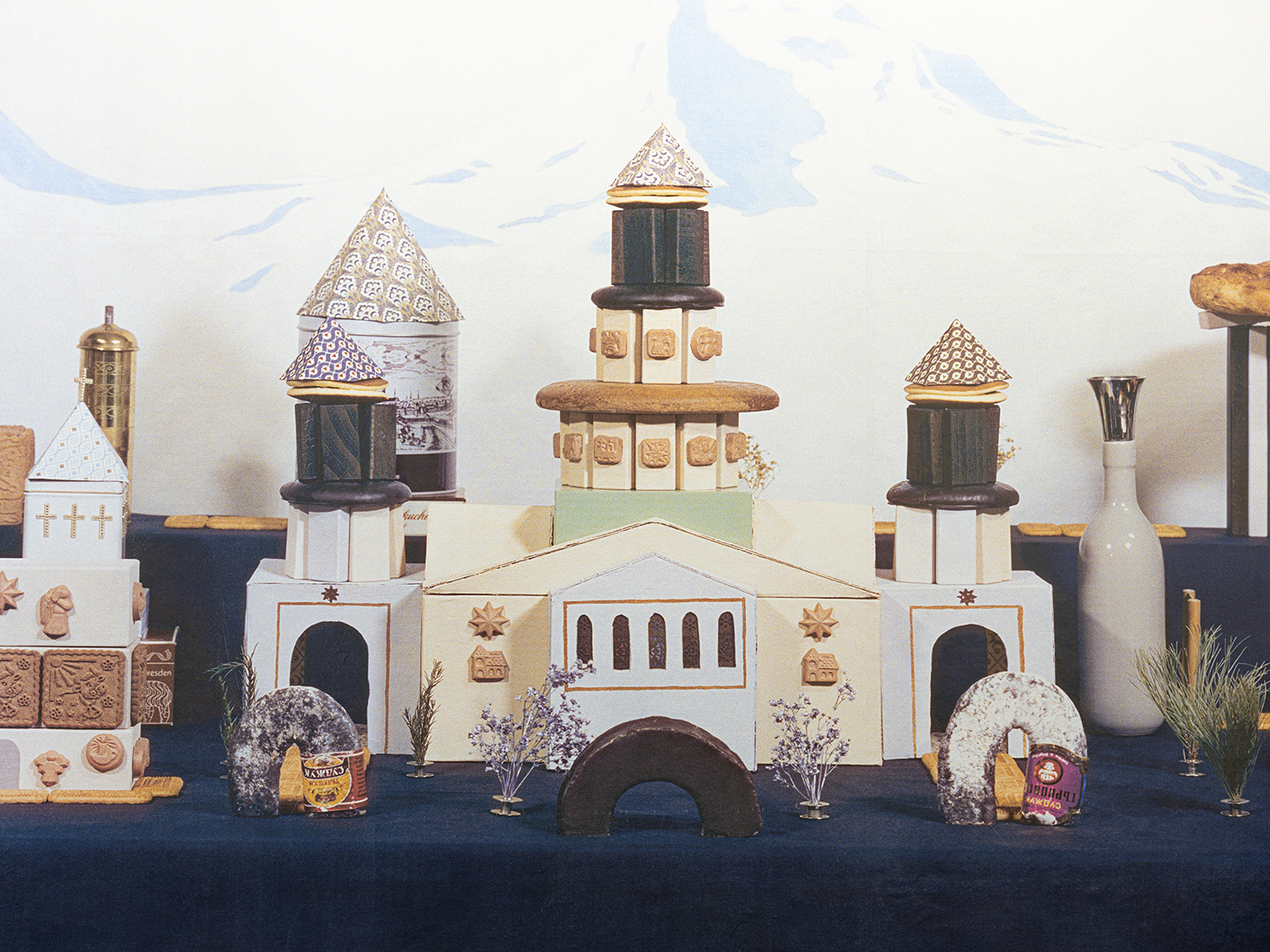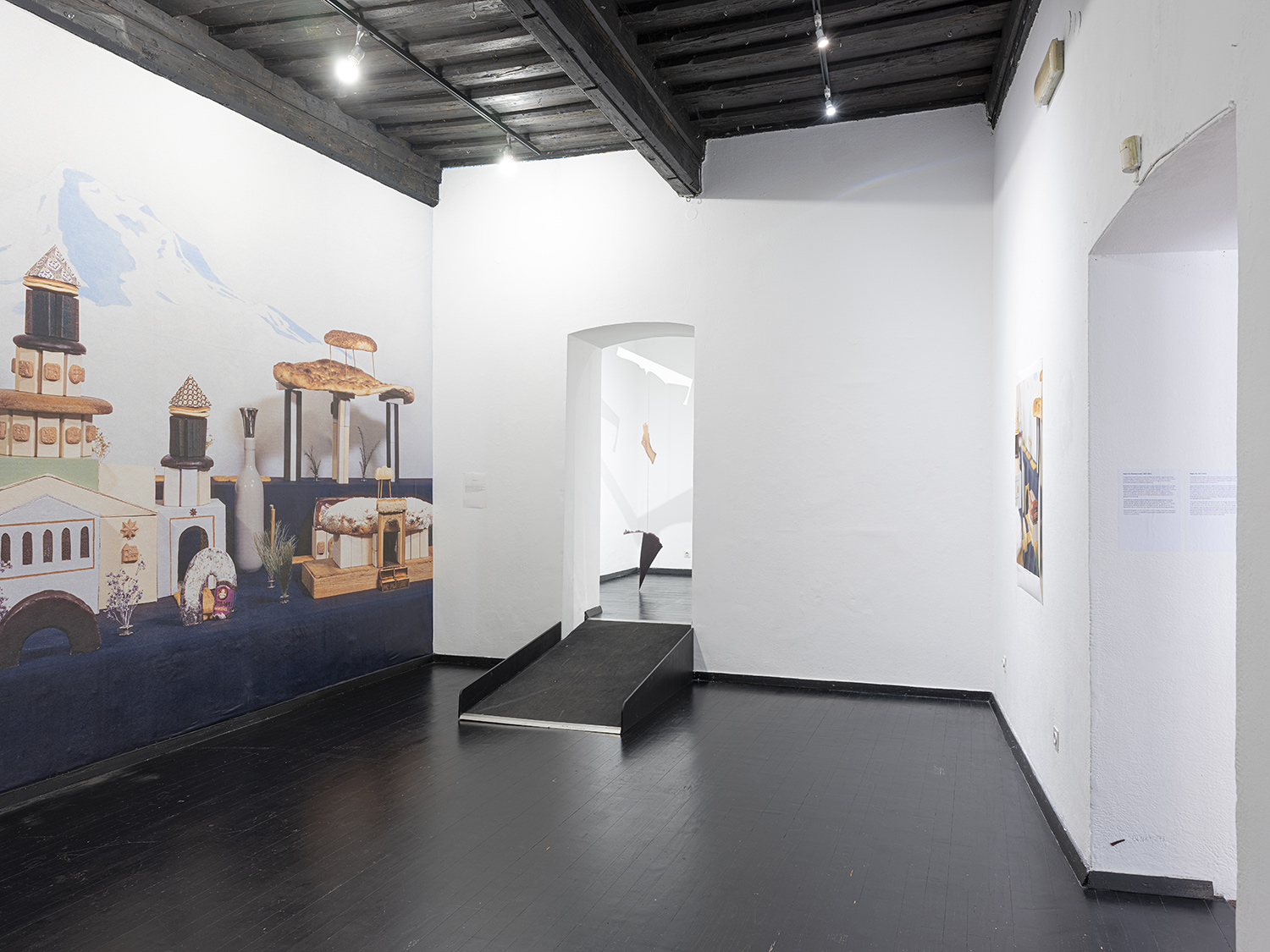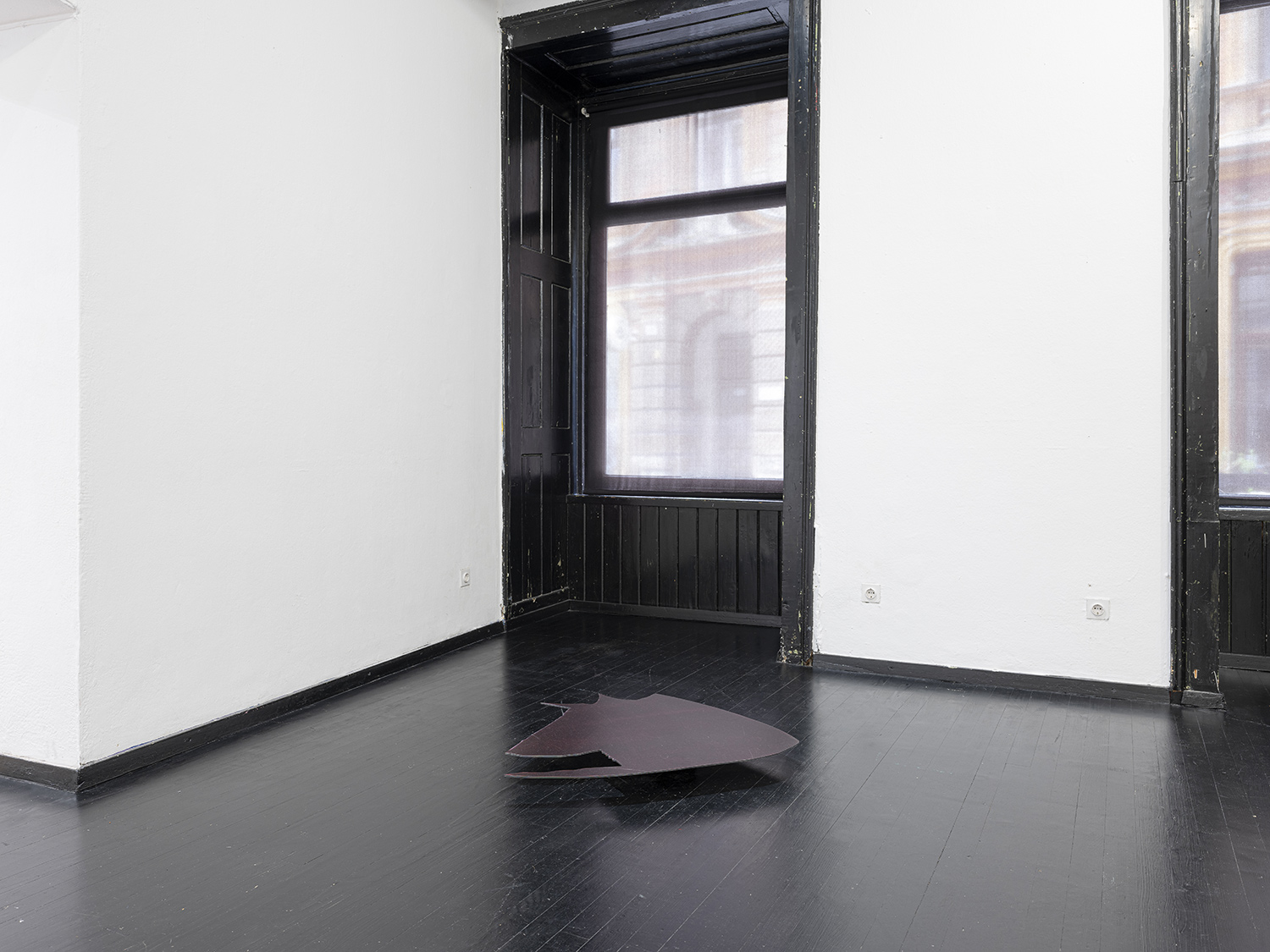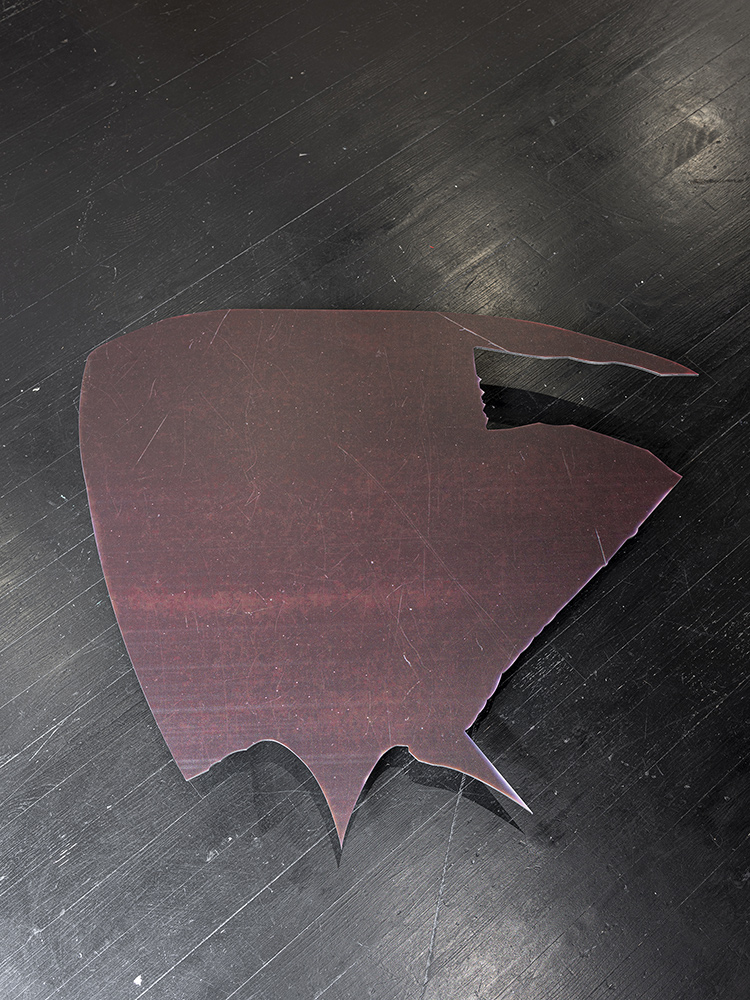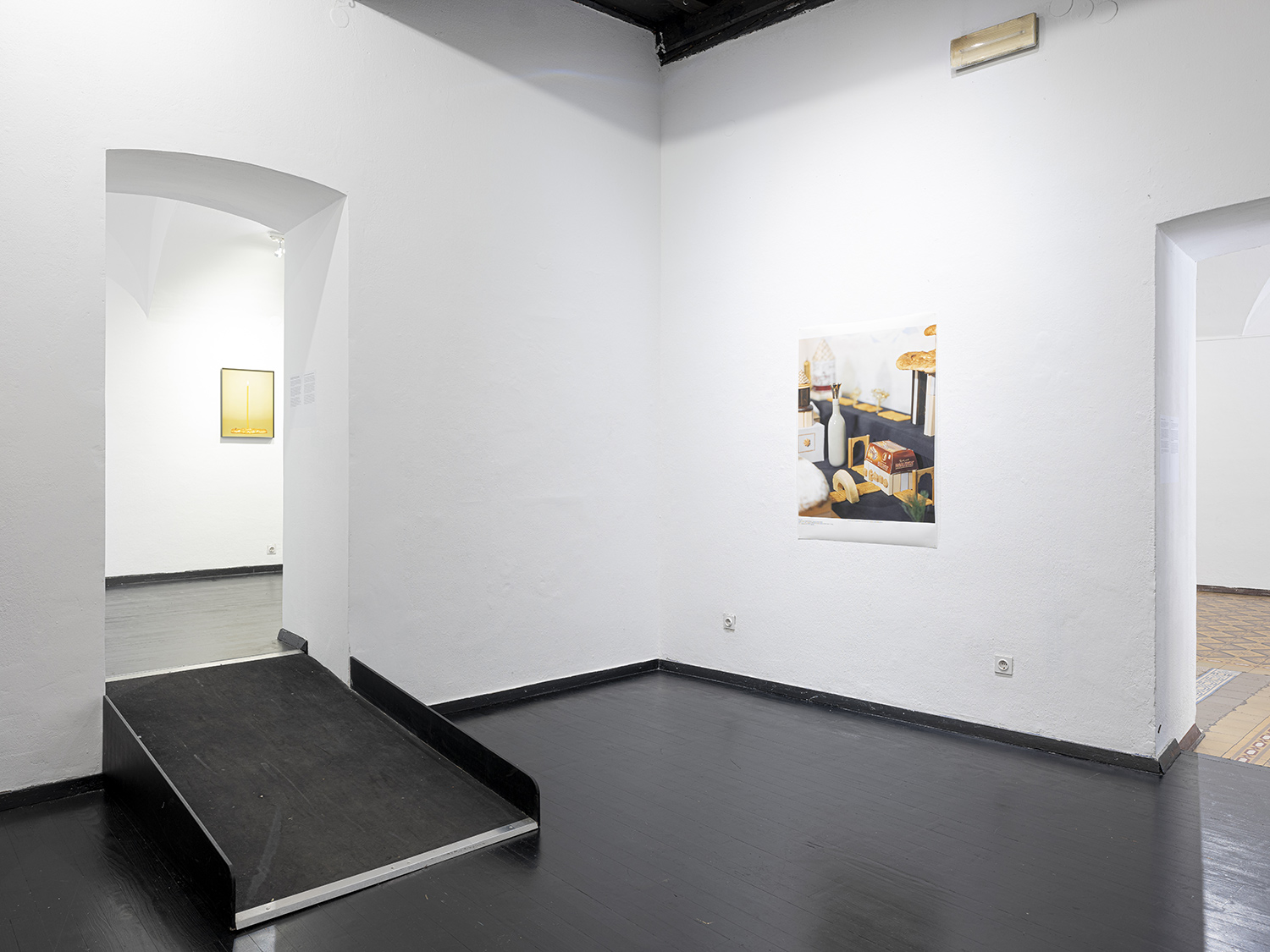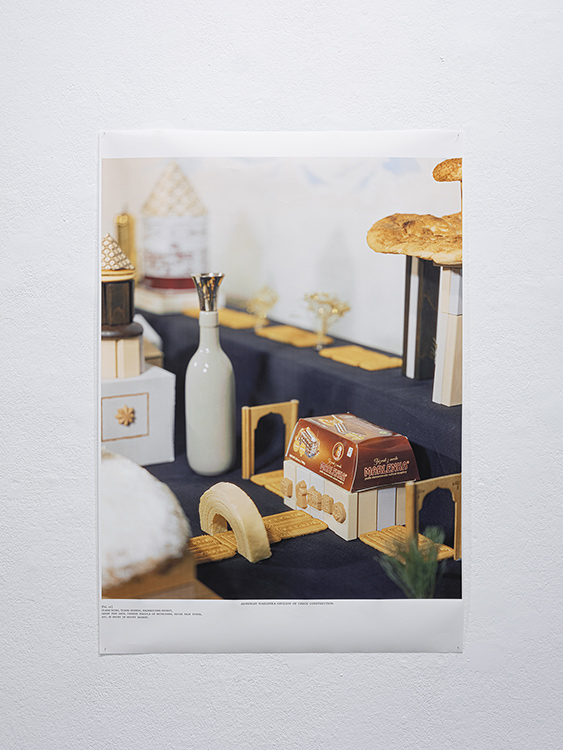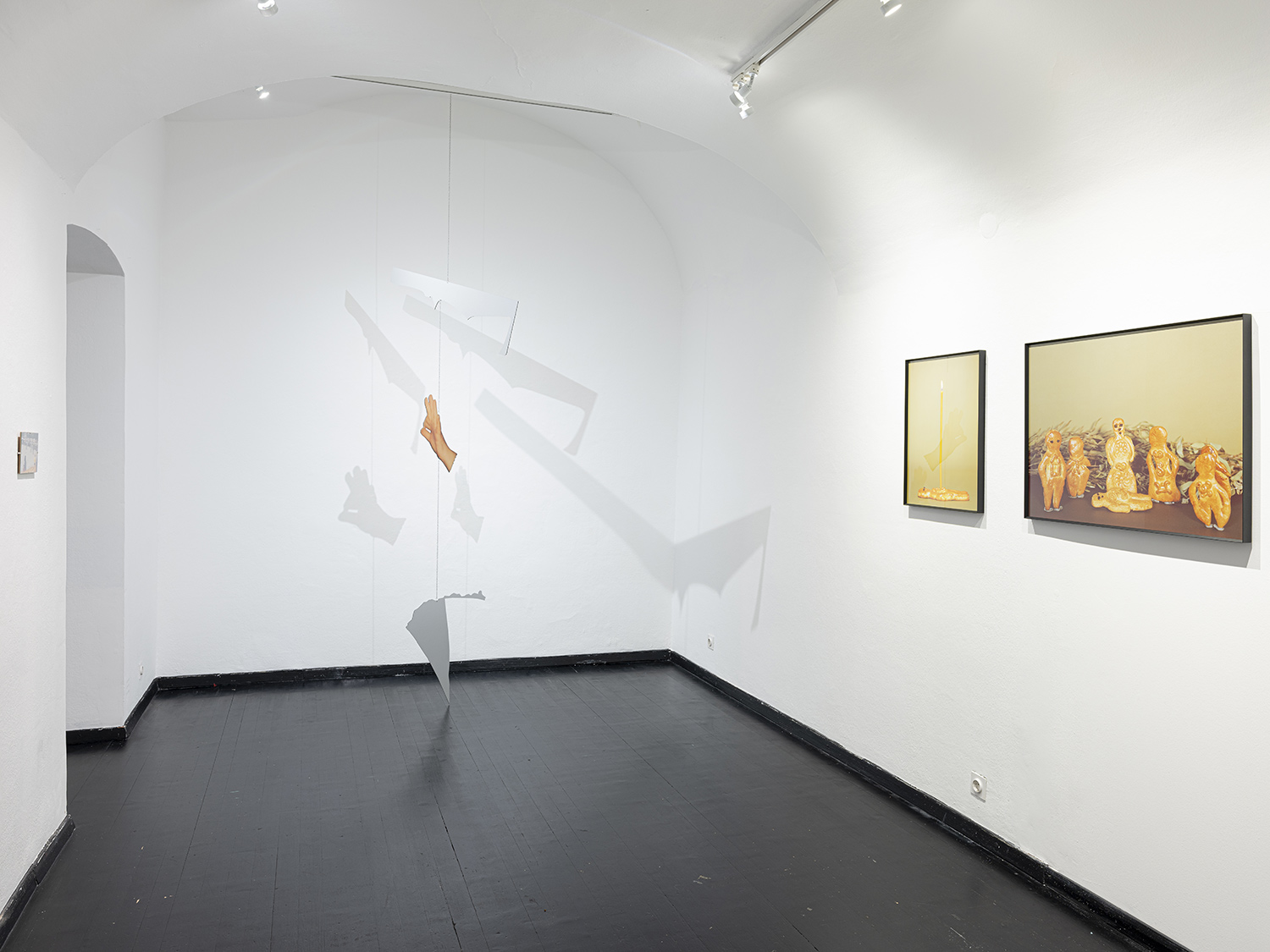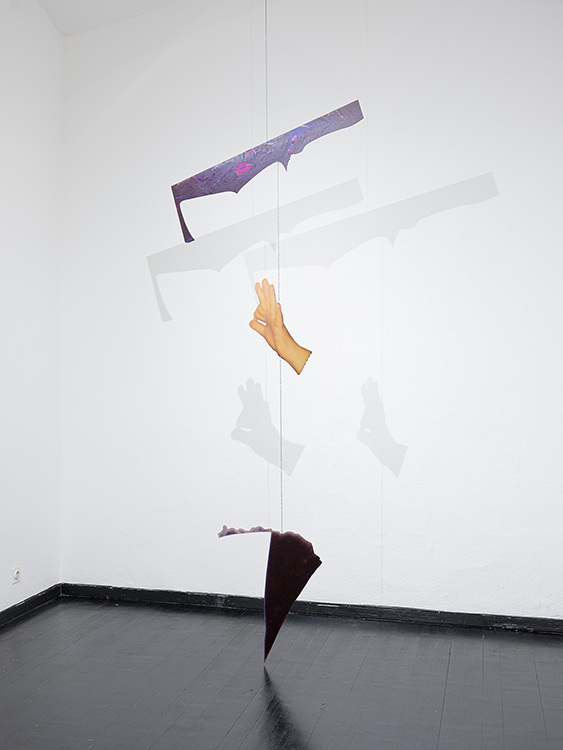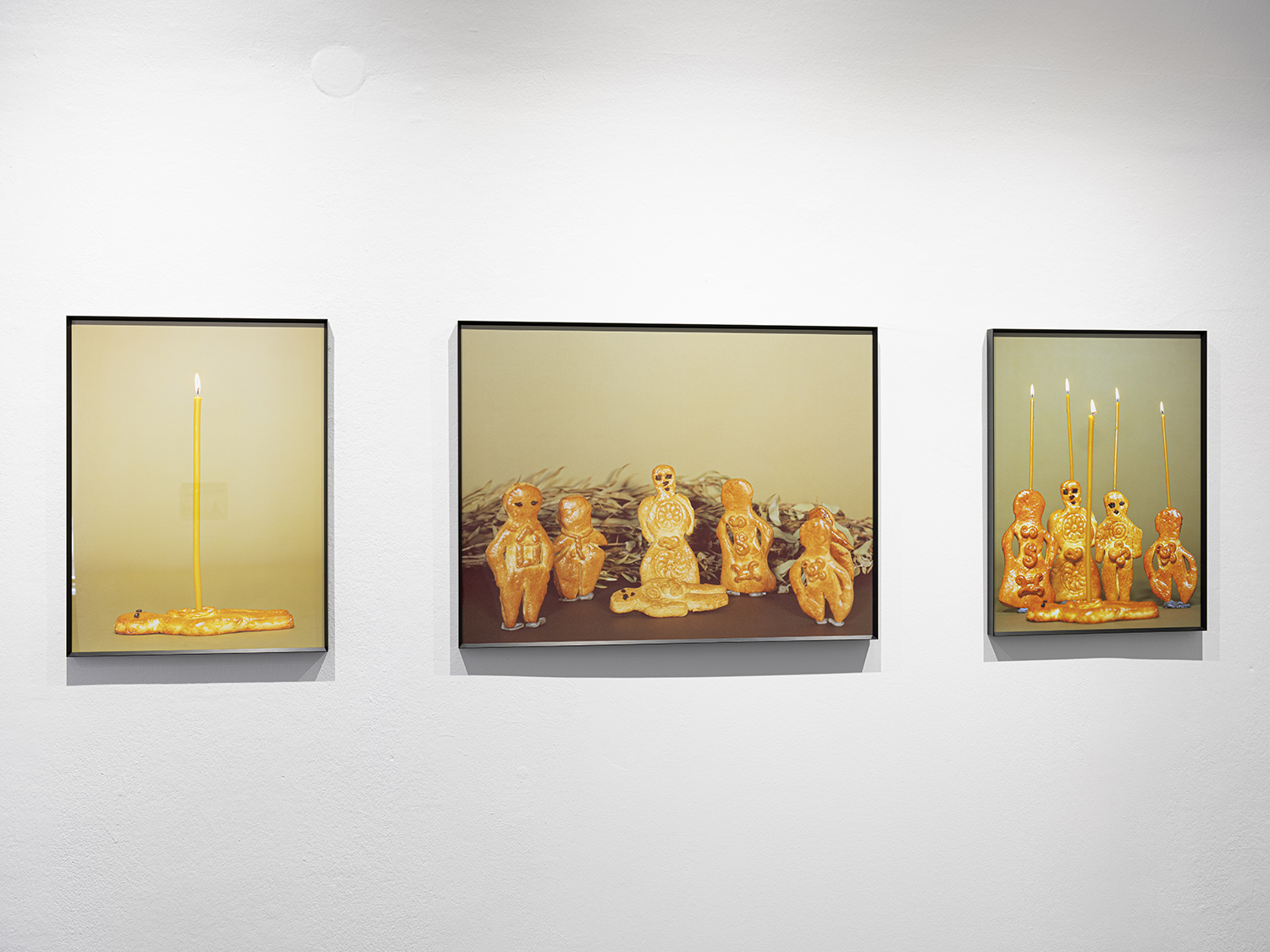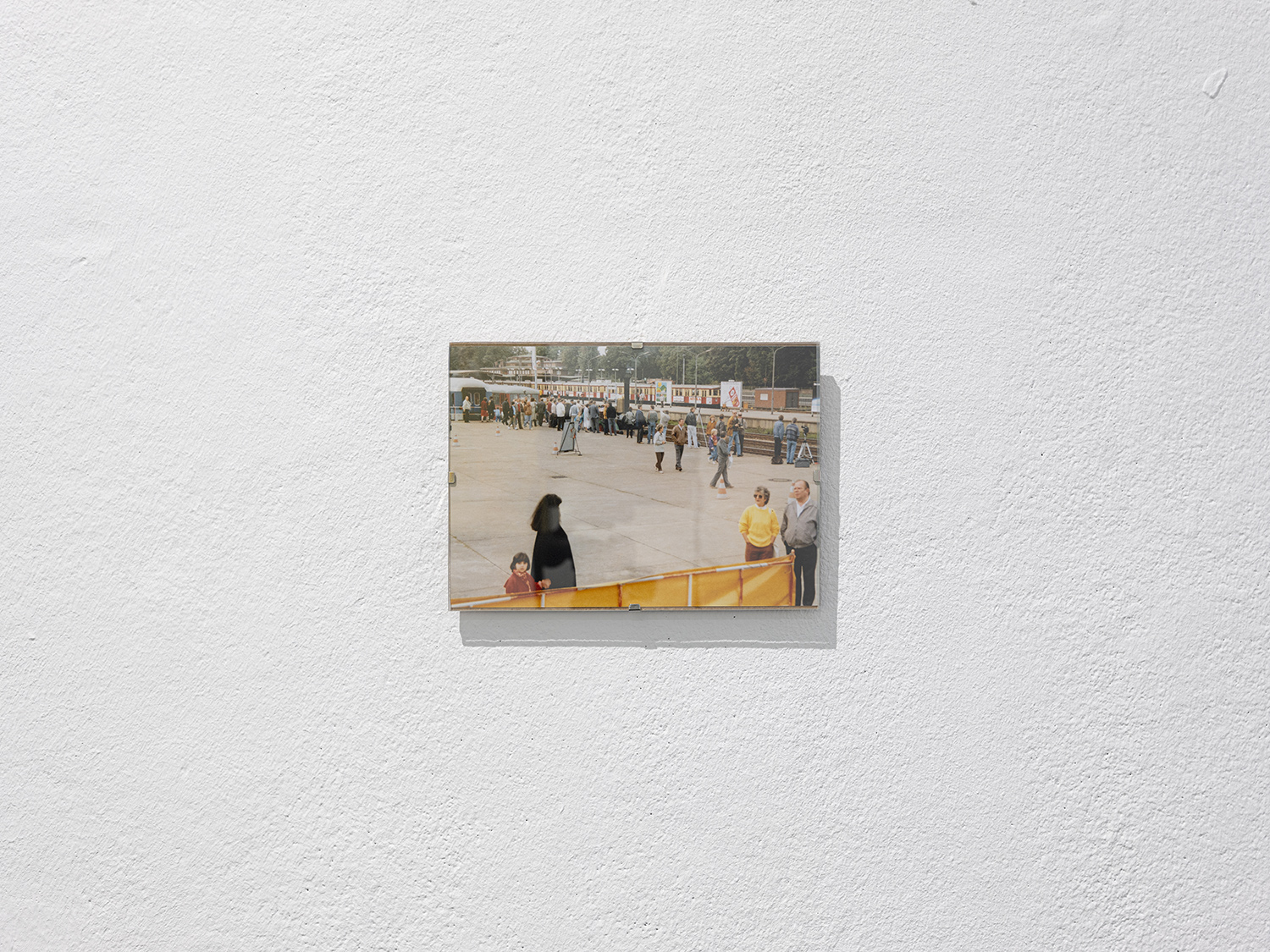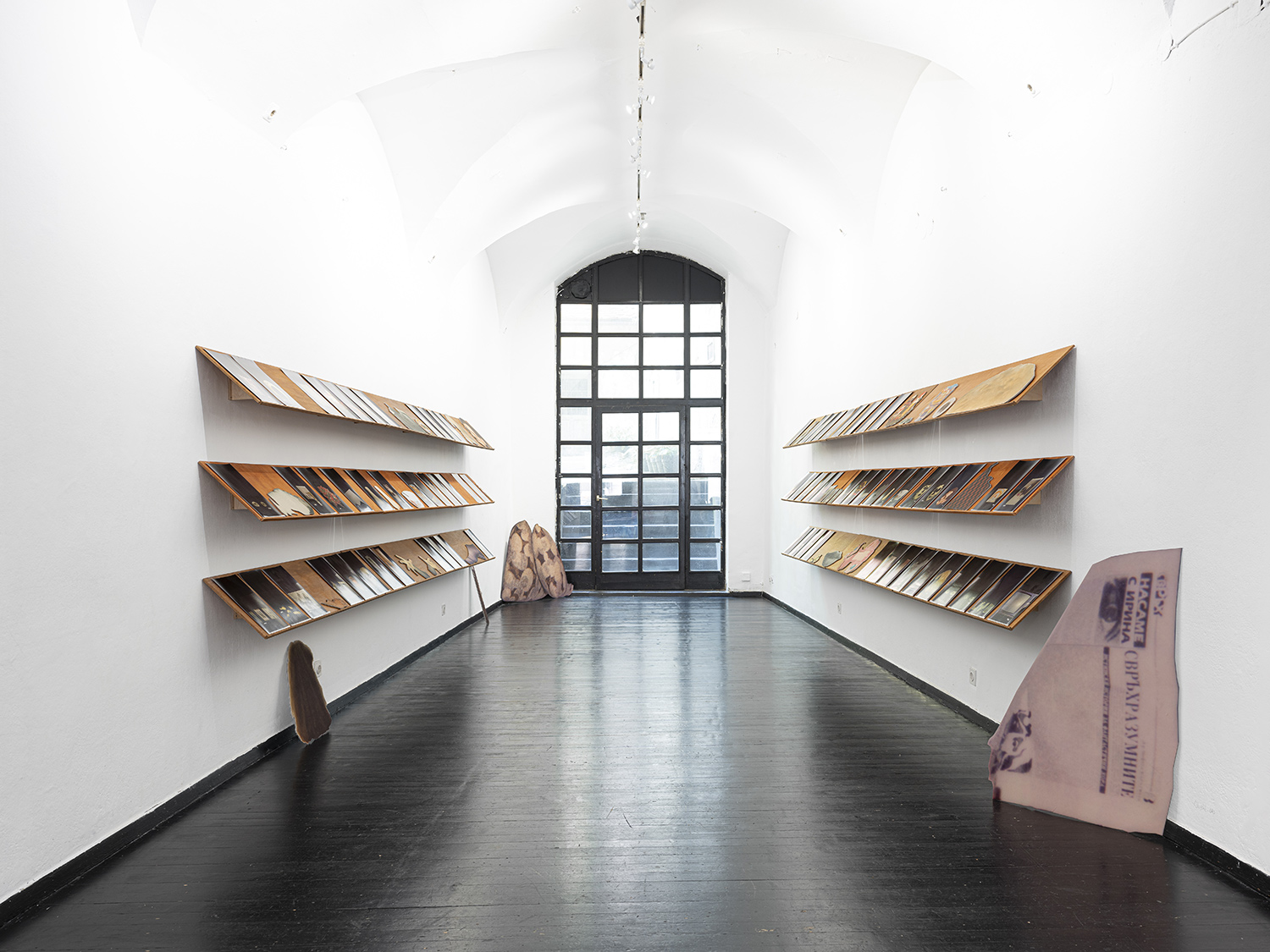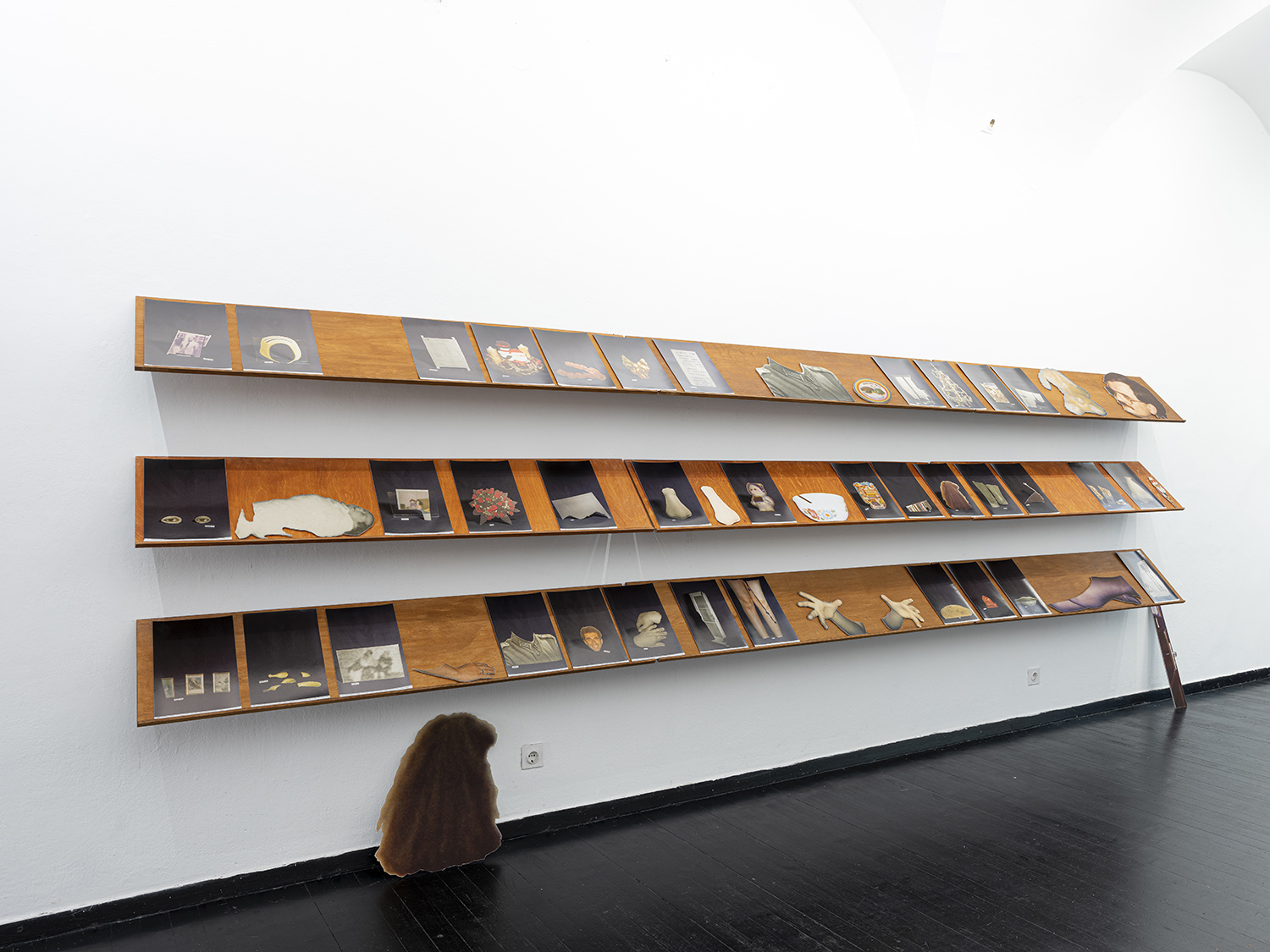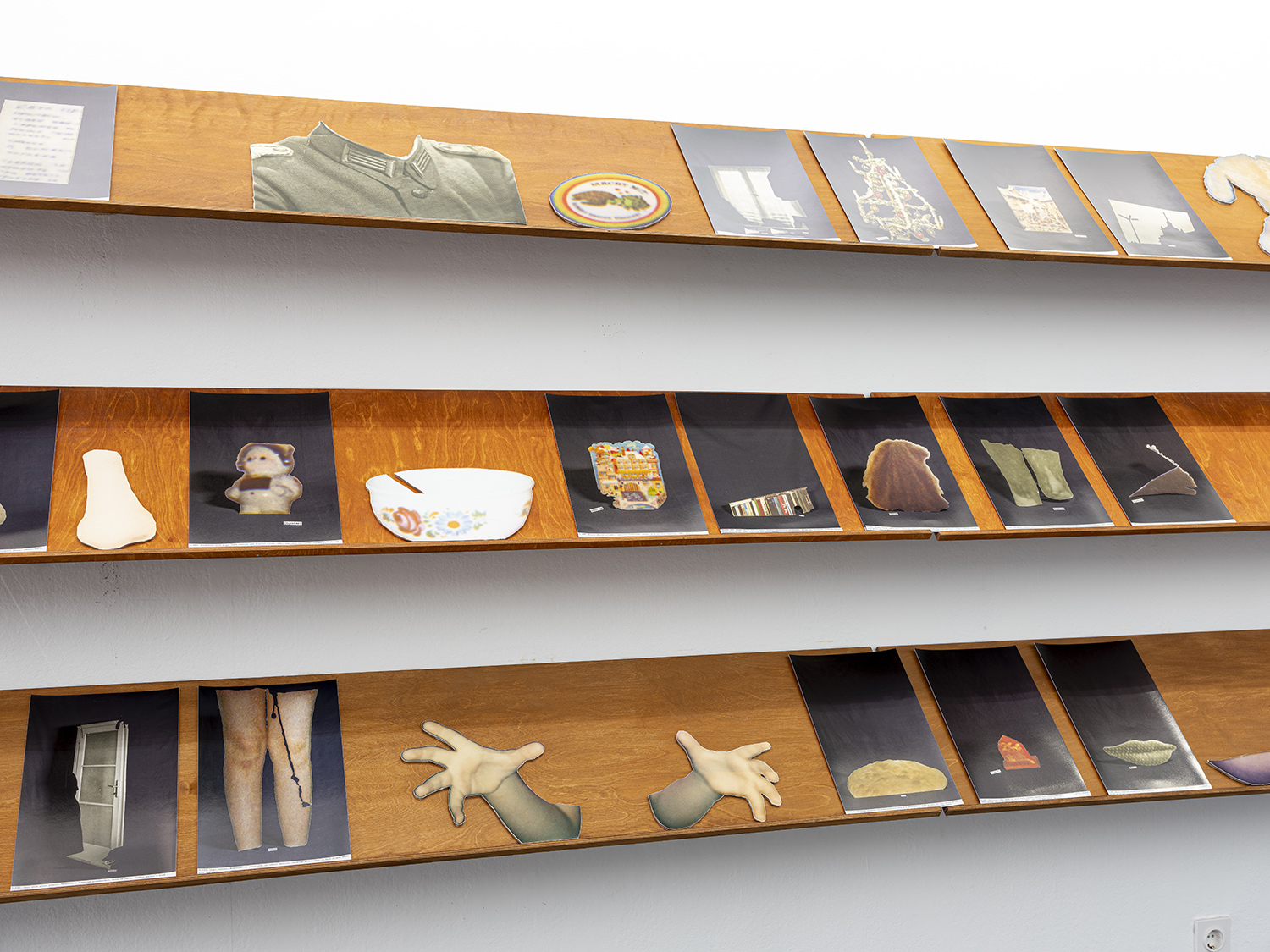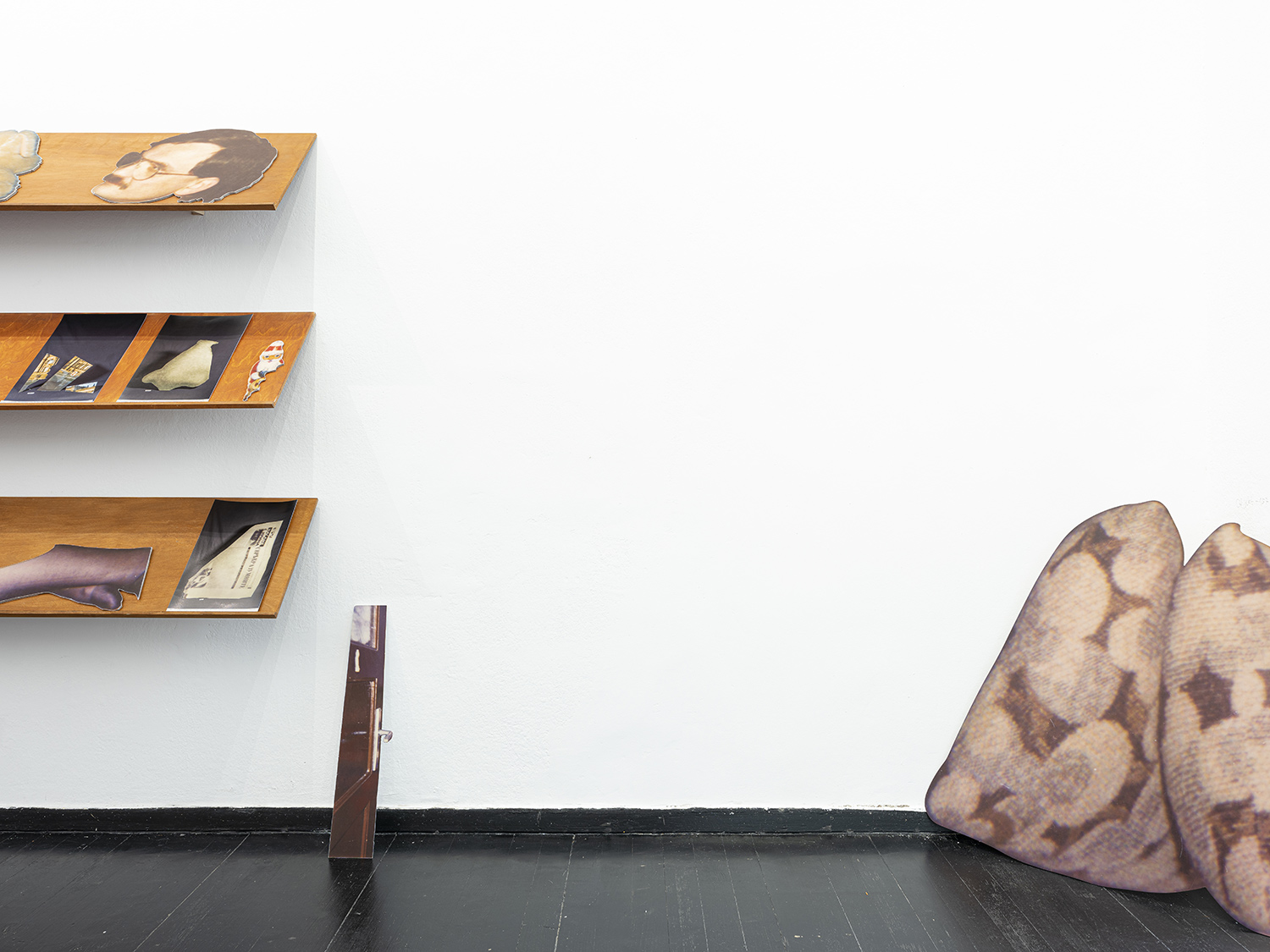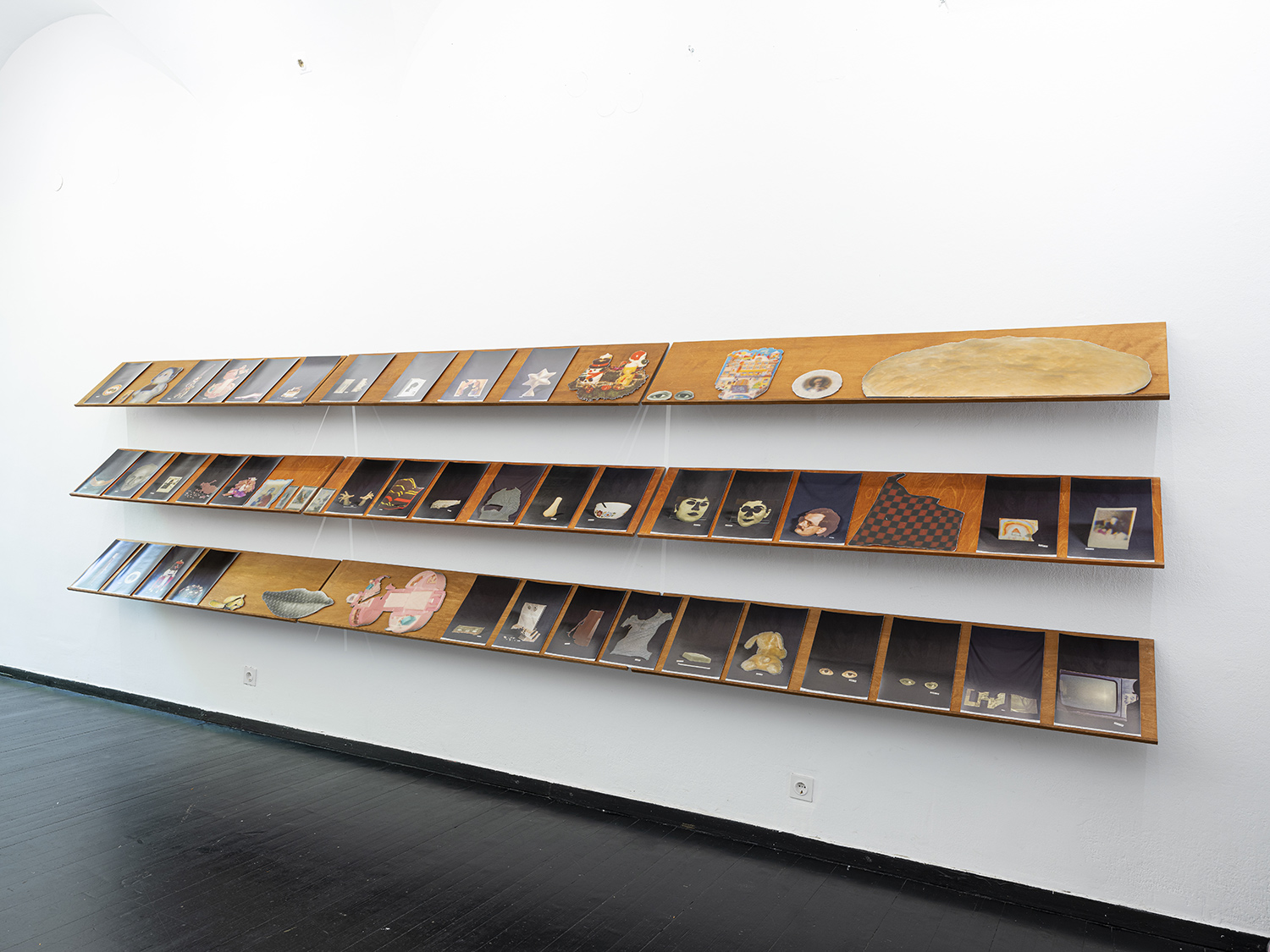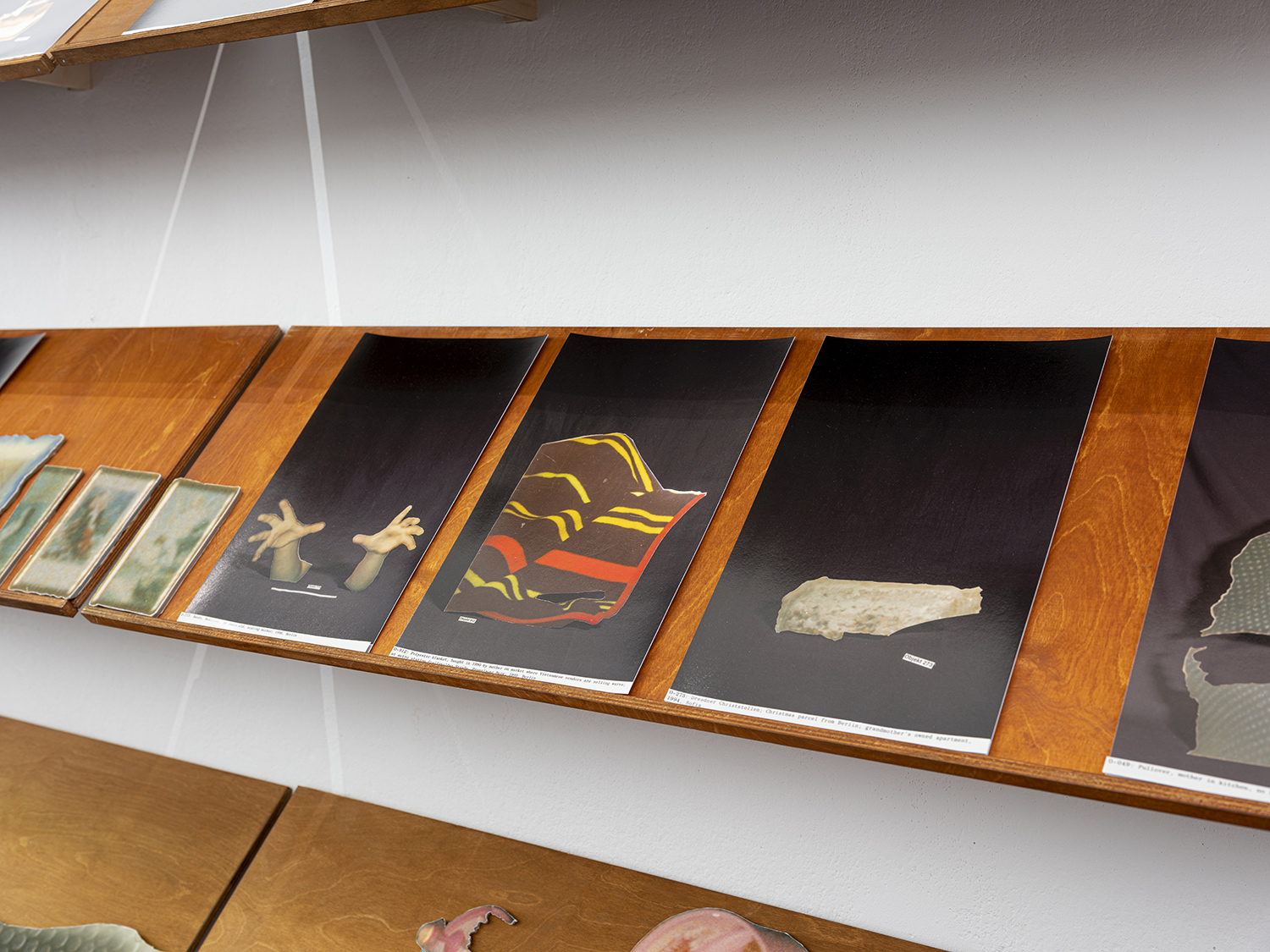Beatrice Moumdjian: Restoring from a Void. Excavation Sites and Magic Cities
The final exhibition of the 19th generation of the World of Art School for Curatorial Practices and Critical Writing 2022/24
10 May – 6 June 2024
Škuc Gallery, Stari trg 21, Ljubljana
Exhibition opening: Friday 10 May 2024, 7 pm
Artist: Beatrice Moumdjian
Curators: Blažka Kirm, Lara Zupan, Lin Gerkman, Neža Vengust, Svitlana Ryabishchuk, Vida Šturm
Mentors: Alenka Gregorič, Vadim Fiškin
School Heads: Lara Plavčak, Tia Čiček, Urška Aplinc
EXHIBITION LEAFLET (pdf)
On Friday, May 10 2024, at 7 pm, we invite you to the Škuc Gallery to the opening of the solo exhibition of Beatrice Moumdjian Restoring from a Void. Excavation Sites and Magic Cities. The exhibition presents three interconnected projects that explore the processes of creating memory and its role in the formation of personal identity. With the exhibition, education within the School for Curatorial Practices and Critical Writing World of Art is ending for the 19th generation of participants.
“Forgetting is a process we should all be allowed to do.” (Beatrice Moumdjian)
/////////
The solo exhibition by Beatrice Moumdjian, Restoring from a Void. Excavation Sites and Magic Cities, in three conceptually linked projects, questions the process of creating and experiencing one’s own memory. The one that consists of photo albums full of missing photographs, narratives brimming with voids and subjective perceptions of historical turning points.
The artist considers her own history as the material of her practice through narratives of past events and present influences. In her interdisciplinary work, she emulates archaeological, forensic and museum approaches. She makes the imitation of the archaeological excavation the metaphorical foundation of her research, as she sets out to unravel the mysteries of her own history through the precise uncovering of tiny fragments hidden in the narratives and photographs that have been handed down to her.
She also reconstructs in her projects the landscapes and spaces that marked the movements and stories of her ancestors. She arranges, studies and labels them like artefacts in a museum collection. Her creative process is at times stylistically similar to a forensic approach, where objects are endlessly numbered and documented.
Moumdjian’s narrative sometimes fills empty spaces with a poetic fictional story, which she constructs by rearranging her own archival material. The basic impulse of her research is the recovery of concealed or lost data. The complete deconstruction of the image of the family, both on the level of discarded photographs and unanswered questions about family history, reflects the fragmentation through which the artist imitates the process of disintegration and reassembly of one’s own identity.
The entry point into the artist’s exploration of her own identity is the photo series Magic City (2017–2021), in which images of a utopian city made of everyday objects and culturally specific food products form elements that are reminiscent of various sacred architectures. Moumdjian mixes elements of her Armenian-Bulgarian-German history and the present to create a magic city. The starting point for the work is the children’s novel The Magic City by the English author Edith Nesbit, taken from the artist’s childhood bookshelf, which she filled together with her mother. The story revolves around a miniature city built with the imagination of a child from tiny objects that the main character finds in his home. In the constructed city, the young protagonist becomes part of magic adventures. Moumdjian sees the magic city as a recipe by which the individual creates a self-portrait of themselves out of their favourite sweets and knick-knacks, at a certain time, in a certain place. The author just has to make sure that their favourite cake does not expire, and that the utopia of the dream city does not collapse.
With her series of analogue photographs Family Constellations / Diasporaportraits as Symbolic Bread (2022), the artist materialises the narrative of her family. She represents her close relatives in bread and defines her relationship to each of them with ornaments. She prepares the bread by combining and intertwining Bulgarian, German and Armenian recipes. The ornaments originate from various cultural and political contexts and places associated with the history of the artist and her family. Even though they originate from the Eastern and Central European and Asian communities, they have a related meaning, for example, symbols tied to fertility. The combinations of recipes and ornaments/symbols form new wholes, and with them, the bread figures take on new meanings. They can be understood as reflections on family members and an attempt to get closer to them. The bread, saturated with meaning, reconstructs the gaps in memory that are part of heritage. The newly created images and their juxtapositions form a narrative, not only about the history of the artist’s family but also about her own identity.
The Forensic Excavations Inventory or The Total Deconstruction of an Armenian Family (2017–2023) is the connective element of the exhibition and the most telling testimony to the artist’s personal story. Moumdjian deconstructs and (selectively) retells her own story and identity, which are conditioned and layered given the constantly changing circumstances. She is working with a collection of 150 family photographs taken between 1930 and 1990. By cutting out individual Objects from the archive of photographs, she exposes thousands of diverse objects, sometimes barely recognisable details taken from their original environment in the photograph. She then enlarges them and transfers them as objects from the cold grey surface of the computer screen into the physical space of the gallery as carriers of memories. They are simultaneously independent units and pieces of a puzzle and serve the artist primarily as visual aids in making sense of her story and identity.
Object 032 is the thick, black hair of the artist’s mother, cut out from a photograph taken in 1990, shortly after the reunification of East and West Germany, in which the artist and her mother observe an arriving train. The mother’s abundant hair is thus no longer just an inconspicuous detail of the image but symbolises a conscious reflection and intervention in the interpretation of her own memories and other people’s narratives. The Objects archive and the Objects themselves form layers of generational memories between Armenian Ararat, Bulgarian Sofia and East Berlin after the fall of the Iron Curtain, as Moumdjian re-historicises them herself.
/////////
“This work tells an autobiographical story that begins before my birth. My own longing and search for recognition, meaning and justice hold together this autobiography in fragments.“ (Beatrice Moumdjian)
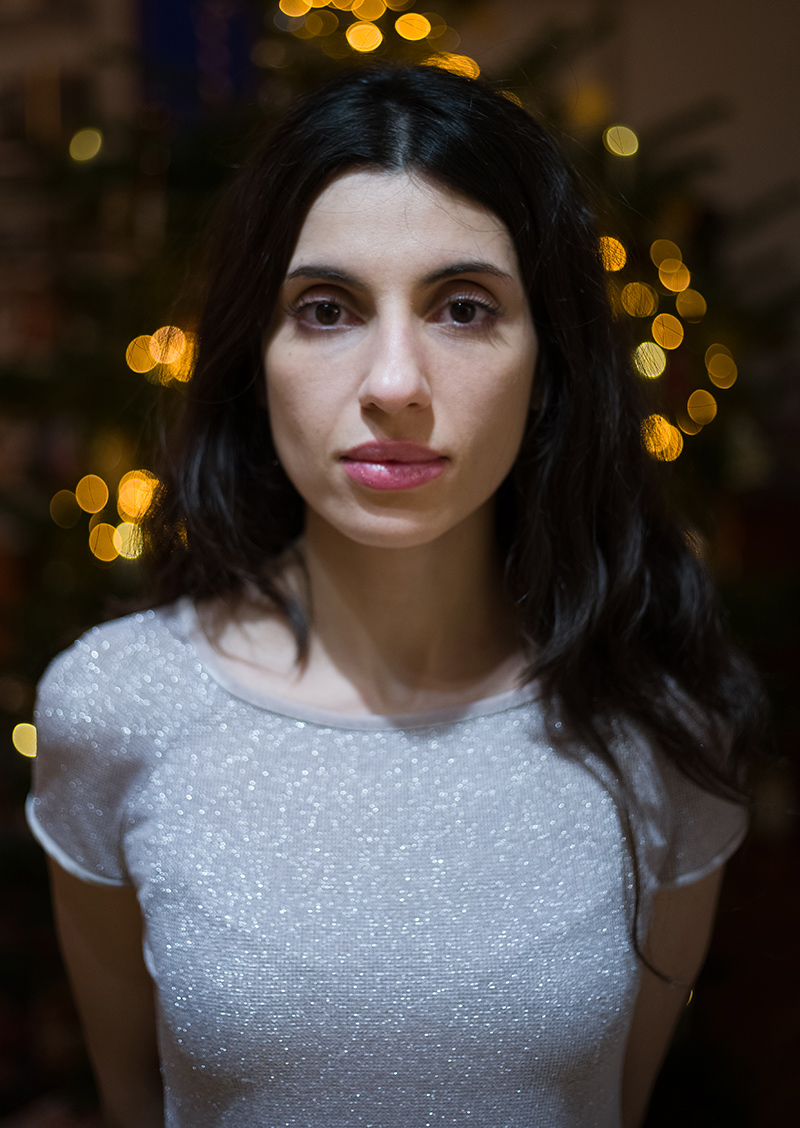
Beatrice Moumdjian (1986, Sofia) lives and works in Berlin, where she moved in 1990. Her interdisciplinary artistic practice is based on methods drawn from various scientific disciplines, which she uses to explore her own Armenian and Bulgarian heritage. Working with the photographic medium, she employs methods similar to those used in archaeology, forensics and museums. She trained at art academies in The Hague (NL), Weimar and Leipzig (DE), where she graduated and is currently continuing her studies in photography to achieve post honours degree for artists (Meisterschülerin). She has exhibited at Kunstraum Potsdam (2023), Les Rencontres d’Arles (2023), КО-ОП (2022), Copenhagen Photo Festival (2021), Goethe Institut Montreal (2021), Galerie Bernau (2021), nGbK Berlin (2019), MdbK Leipzig (2019), Kassel Documentary and Video Festival (2018) and other international venues. She is the founding member of the non-profit cultural association Resonanzraum Erzgebirge e.V. and part of the artistic research programme ost in space.
Magic City, 2017–2021
The photo series Magic City presents images of a utopian city made up of everyday objects and culturally specific food products. The artist draws inspiration for her photographs from fragments of classical Armenian sacral and contemporary architecture.
Beatrice Moumdjian weaves together elements of her Armenian-Bulgarian-German history and the present to build a magic city. Moumdjian sees the magic city as a recipe by which the individual creates a self-portrait of themselves out of their favourite sweets and knick-knacks, at a certain time, in a certain place. In doing so, she wishes to emphasise and, above all, respect that culture is created through the exchange and fusion of different influences on the individual, which express unique socio-cultural and geopolitical experiences.
The work is based on the children’s novel The Magic City (1910) by the English author Edith Nesbit, which had a strong influence on the artist as a child. It is the story of a miniature city built with a child’s imagination from tiny objects that the main character finds in his home. In the constructed city, the miniaturised protagonist experiences magical adventures. The photo series also includes descriptions of the images, which combine the artist’s research into architectural forms of expression and the heritage of the specific food products and objects depicted.
___________________
Family Constellations / Diasporaportraits as Symbolic Bread, 2022
The series of analogue photographs of Beatrice Moumdjian, Family Constellations / Diasporaportraits as Symbolic Bread materialises the history of her family as symbolic bread and interprets it biographically in a new visual language. Using images of bread with various ornaments, the artist explores the relationships with her family members and their stories.
When preparing the bread, she draws on her own heritage by combining and intertwining Bulgarian, German and Armenian traditions. For example, she merges the recipes for baking Bulgarian Easter bread with the preparation of Stutenkerl, a yeast dough that is shaped into a figure and has been baked in German-speaking countries for centuries on special occasions, especially around St Nicholas’ Day. Or she makes the recipe for Gata, a round Armenian festive bread in various sizes, which is often associated with wishes for good luck and blessings.
The ornaments/symbols that adorn the bread originate from various cultural-political contexts and places associated with the history of the artist and/or her family. Although they come from the East-Central European and West-Asian communities, they have related meanings, for example, symbols associated with happiness, fertility and eternity. The combinations of recipes and symbols form new wholes and give the bread figures new meanings. They can be understood as thoughts about family members and as an attempt to get closer to them.
___________________
Forensic Excavations Inventory or The Total Deconstruction of an Armenian Family 2017–2023
The connective element of the exhibition and the most telling testimony to the artist’s personal story is the project Forensic Excavations Inventory or The Total Deconstruction of an Armenian Family. Beatrice Moumdjian deconstructs and (selectively) retells her own story and identity, which are conditioned and layered given the constantly changing circumstances. She works with the remnants of her family’s photo archive, around 150 photographs dating back to the 1930s, forging connections between West Asia, the Balkans, East Germany and the united Berlin of the 1990s.
From the photos, Moumdjian scanned and digitally cut out thousands of objects such as toys, furniture, body parts, … belonging to her or her family members. She then enlarged these details and transferred them from the cold grey background of the computer to the physical space of the gallery as carriers of memories. Each object is accompanied by the artist’s note on something she remembers about it, its origin, or the meaning she discovered as she tried to understand it better. The Objects become both independent entities and pieces of a puzzle, but above all serve as visual aids in making sense of her own story and identity.
The key role is played by the photographic medium as a multi-layered time machine – photography as a medium that ages and is damaged due to its physical properties, whether through transfer from one album to another or through contact with the hands. First, there are the reflections and shadows that fell on the person or object when the photo was taken, then the damage and scratches that occurred over time on the original photos, the next layer includes the fibres and dust that got into the scanner during the digitisation of the photos, and the last layer shows the damage to the paper on which the photos were printed after scanning.
Object 032 is the thick, black hair of the artist’s mother. It is a detail from a photograph taken in 1990, shortly after the reunification of East and West Germany, in which the artist and her mother observe an arriving train. The mother’s abundant hair is thus no longer just an inconspicuous detail of the image but symbolises a conscious reflection and intervention in the interpretation of her own memories and other people’s narratives. The archive of Objects consists of layers of generational memories between Armenian Ararat, Bulgarian Sofia and East Berlin after the fall of the Iron Curtain, as Moumdjian re-historicises them herself.
25 May at 6.30 pm: Artist talk with the artist Beatrice Moumdjian at Škuc Gallery.
30 May at 5 pm: Public lecture by Dr Natalija Majsova at Škuc Gallery.
31 May at 6 pm: Viewing of the exhibition with the curators – in Slovenian, accompanied by a Slovenian sign language interpreter.
6 June at 6 pm: Final viewing of the exhibition with the curators – in English.
Visiting
Entry to the exhibition and all accompanying events is free of charge. Škuc Gallery is equipped with a ramp for persons with reduced mobility at the entrance (width 150 cm) and in the space (width 106 cm). The inner courtyard and the toilets of the gallery are not accessible to wheelchair users. Accessible toilets are available at the Druga violina restaurant next door. Please contact the restaurant staff for assistance. The toilet in the gallery is gender-neutral. Free tap water is available. The gallery is not equipped with a hearing loop. An easy-to-read booklet is available in the gallery for an independent visit to the exhibition. The texts are also prepared in a special document for the e-reader, which is available on the World of Art website. A magnifying glass is also available for people with visual impairments. As we want to make the visit to the exhibition safe also for people with compromised immune systems, we recommend the use of protective masks. Dogs are welcome. The staff can provide a bowl of water for them.
Arriving
The nearest bus stop to the gallery is Gornji trg (180 m), where bus lines 2, 3, 11, 19 and 27 stop. More information is available on the LPP website or by calling LPP (+386 1 582 2425, +386 51 449 992). Most buses are equipped with a ramp, but we still recommend that you call LPP to inquire about the accessibility of the bus during your time slot. The gallery is in the pedestrian zone in the centre of Ljubljana. The nearest driveway for cars is 50 m away. The streets in the immediate vicinity are paved. You can catch a ride with the free Kavalir vehicle service in the pedestrian zone, which can be ordered from 6 am to 10 pm by phone (+386 31 666 331, +386 31 666 332). Some vehicles are accessible for wheelchair users; we advise you to call ahead to inquire. The nearest payable car park with disabled parking (8) is NUK II. near Emonska cesta (500 m), the nearest disabled car park (1) for short-term parking is at Levstikov trg (100 m). For more information, contact JP LPT (+386 1 300 1200). A map of the accessibility of locations in the centre of Ljubljana and other useful information is also available on the website of the Slovenian Paraplegic Association.
Slovenian proofreading: Inge Pangos
English translation: Arven Šakti Kralj
Cover image: Beatrice Moumdjian
Design: Lea Jelenko
Production: World of Art/SCCA-Ljubljana
Co-production: Škuc Gallery
Supported by: Municipality of Ljubljana – Department for Culture
Exhibition partners: Zavod Risa, Druga violina
Sponsor: DIOPTA, d. o. o., Ljubljana
The World of Art School programme is developed in partnership with Cukrana/MGML and supported by the Ministry of Culture of the Republic of Slovenia.
The exhibition is part of the mobility programme funded by the European Union.
This work was produced with the financial assistance of the European Union. The views expressed herein can in no way be taken to reflect the official opinion of the European Union.
![]()
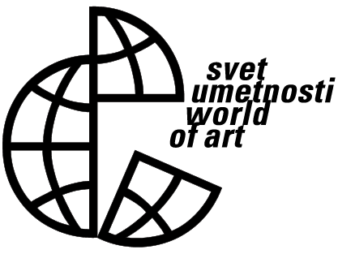
![]()
![]()
![]()
![]()
![]()
![]()
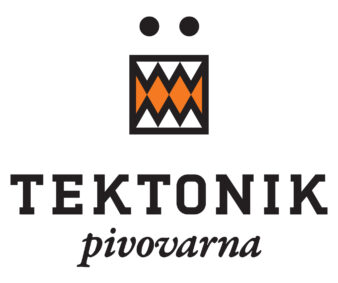
![]()
![]()
![]()
